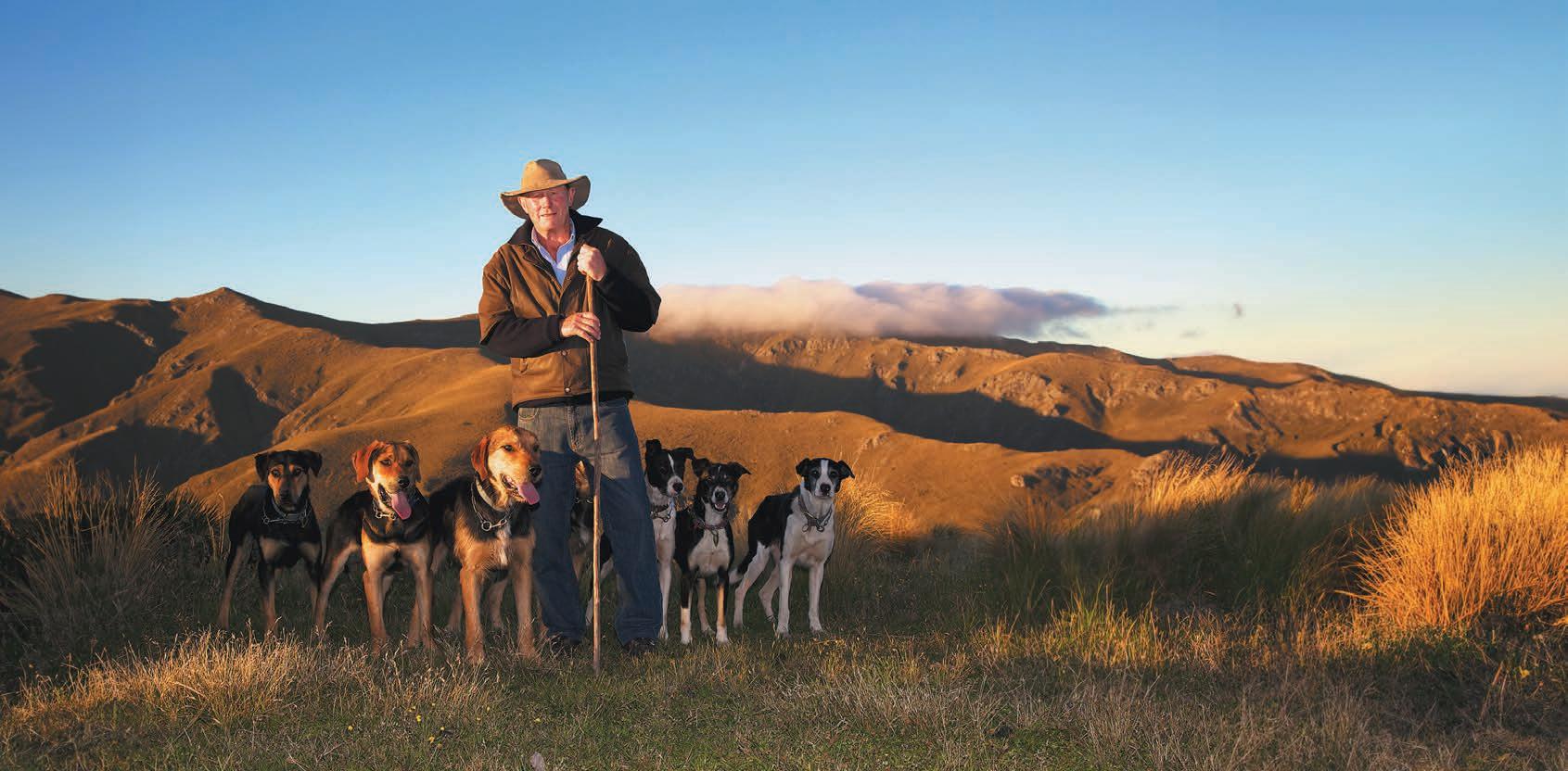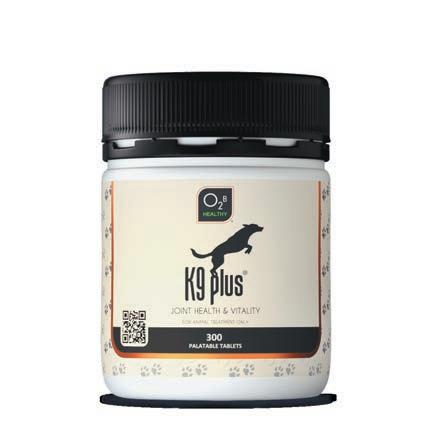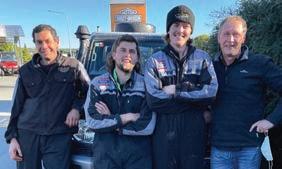



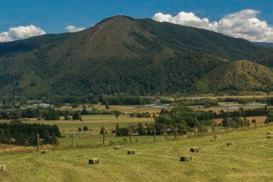


















Circulating to 14,500 rural properties in Nelson, Tasman, Marlborough and the West Coast every month.
News
Eloise Martyn eloise@topsouthmedia.co.nz
Advertising Sales
Danielle Brown danielle@topsouthmedia.co.nz
Summa Donald summa@topsouthmedia.co.nz
Steve Page steve@nmf.co.nz
Accounts Queries accounts@topsouthmedia.co.nz
563 Main Road Stoke, Nelson 03 548 5900
52 Scott Street, Blenheim 03 928 4121
19 Wallace Street, Motueka 03 528 2088
100% locally owned and operated
FROM PAGE 1
ANNE HARDIE
Murray King may be a dairy farmer, but you will seldom find him milking cows because he is too busy promoting and developing the New Zealand dairy industry.
In the King’s Birthday Honours, he has been awarded the Member of the New Zealand Order of Merit (MNZM), for his services to the dairy industry which includes a long list in leadership and governance roles.
For 14 years he was on the Livestock Improvement Corporation board and 12 of those as chairman with the goal of providing genetics expertise, information and technology to the dairy sector. He has been involved in Fonterra governance development programmes, the development of leaders in rural New Zealand and for the past 25 years has been committed to the development of the Waimea Community Dam. He is chairman of the Waimea Irrigators Ltd and is on the board of the Cawthron Institute.
We know it’s dry and challenging for many currently, we also know the substantial impact that drought can have on the ecosystem and agriculture of the affected region, cause harm to the local economy as well, and cause enormous stress and financial pressure to farmers. For anyone looking for assistance or support regarding drought conditions head to www.mpi.govt.nz and type in drought on the search bar, then click ‘dealing with drought conditions’. Here you will find a pool of resources and helpful links. Not sure where to start or feeling overwhelmed Rural Support Trust have local rural people local rural people who know from experience that pressures can mount up. Your local trust can provide support and advice. Talking to them is confidential, and free of charge. They can connect you with the services you need, whether it’s financial and business advice or health services. Freephone 0800 78 72 54 (0800 RURAL HELP).
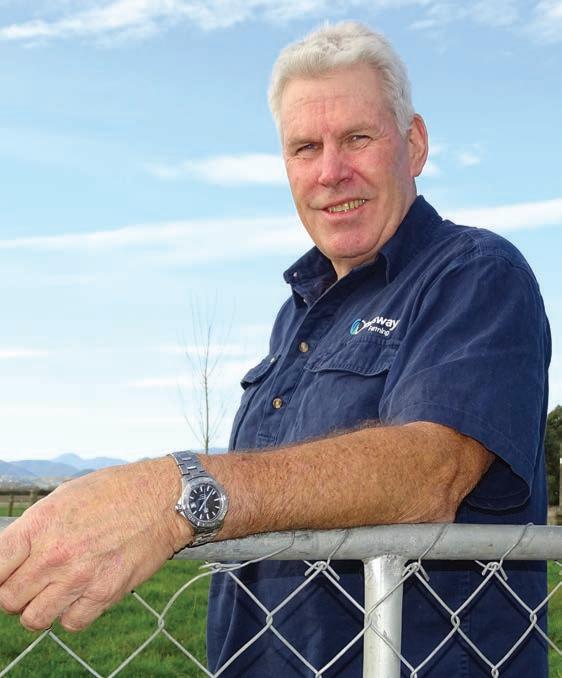
The cows still get milked on the Waimea Plains dairy farm where he grew up and milk is turned into ice cream, while his family business has expanded to larger dairy farms in Canterbury. It is his pas-
sion for the industry that drives his roles outside the farm gate.
“I’m not the sort of person to be stuck in a cowshed and that’s one of the reasons I’m involved in other ways. And
if you open your mouth, you get a job. It’s a family thing too – a sense of obligation for community involvement and industry involvement. And I’m a nosey bugger and want to be involved.”
He admits he thought long and hard about whether to accept the award or not because everything he has been involved in has been a team effort.
“But it’s a great honour and it needs the respect of that. But my success is due to other people as well. Plus, it’s really important to highlight the positive in the industry – and not just the dairy industry but the primary sector.”
Murray says leadership is about taking people where they often don’t want to go, while governance is about making good-quality decisions.
“You do it because you want things to be better. Problems are to solve rather than be a problem. You have to look for a solution because every problem has a solution.
“I’m very patriotic and I want things to be better. That’s why you do these things.”


Woolworks Scourer plant reopens after cyclone Gabrielle
Associate Agriculture Minister, Mark Patterson, formally reopened the world’s largest wool processing facility today in Awatoto, Napier, following a $50 million rebuild and refurbishment project. “The reopening of this facility will significantly lift the economic opportunities available to New Zealand’s wool sector, which already accounts for 20 per cent of global strong wool production,” Mr Patterson says. “The refurbished facility will bolster New Zealand’s wool scouring capacity and capability, contributing to the local and wider economy and growing our wool sector. “Woolworks’ Awatoto scouring facility is the largest of its kind in the world. Woolworks scours 80 per cent or 100 million kilograms of New Zealand’s wool each year. The Awatoto facility scours more than half of New Zealand’s wool. “Throughout today, I am hosting key industry leaders from our largest export markets, including delegates from International Wool Textile Organisation Congress. This presents an opportunity to build and strengthen connections across the global wool supply chain, promote our incredible, natural fibre, and help open doors for New Zealand wool businesses. “This, along with the woolshed meetings we’re holding across New Zealand, are part of the Government’s commitment towards supporting the success of the food and fibre sector, including New Zealand wool businesses. “The $50 million rebuild follows extensive damage to the site from flooding and silt caused by Cyclone Gabrielle in early 2023.
On the 1st of July, Marie Fitzpatrick stepped into the Chief Executive role for Rural Women NZ. Marie comes from a rural background, having spent some of her childhood in Central Otago and has an eclectic CV which will benefit the diverse range of work we are involved in. Charitable community service is a key strand of our work and Marie has a wealth of knowledge in this area as co-founder of the Good Bitches Baking Charitable Trust. Her experience growing the charity from a few friends baking for the community to a nationwide network of more than 3,000 volunteers will be invaluable as we continue on our journey to grow our membership. Government advocacy is also an important part of our work and Marie brings several decades of experience in and around the public sector, most recently in the leadership team at Fisheries New Zealand in the Ministry for Primary Industries.
A 100-year-old sample of NZ milk powder has been retrieved and tested by scientists from Ernest Shackleton’s first solo expedition to Antarctica. The milk powder, labelled then as ‘dried milk’ was made in 1907, was aboard the ship Nimrod as part of explorer Ernest Shackleton’s first solo expedition to step foot on the South Pole and remained preserved in the sub-zero temperatures for over a century. Testing has found it has remarkably similar nutrient content to the milk powder produced today.
Luggage and accessory brand Honest Wolf announces a new licensed New Zealand Team range of quality wool and leather accessories, in the build-up to the Paris 2024 Olympic Games. Both coming from competitive rowing backgrounds, Honest Wolf founders Sam and Sophie Hurley have created this range to support the New Zealand Team with portions of each sale going directly to the Team. Highlights of the limited-edition range include a Wool Cap featuring the NZ Team embossed leather patch, a Weekender bag that has a message of encouragement ‘we are the New Zealand team’ embossed on its luggage strap, and a Passport Holder made with homegrown Papanui Estate Wool; all perfect travel additions for anyone heading over to France to see the action live.
With our own and many neighbouring areas dry feed supplies are low . We know it’s incredibly tough right now, if you are struggling to source feed or are under pressure from the freight costs please reach out:
Federated Farmers have relaunched their Feed Coordination Service to help connect those who have surplus feed with those who need it. Please note this service is only intended to connect buyers with sellers – they aren’t coordinating feed donations. All transaction costs, including transportation, are to be organised privately between the buyer and seller.If you need to buy feed, or have surplus feed for sale, please head to the Federated Farmers website and register for free or call 0800 Farming (0800 327646) Option 2 - and request a callback. Rural Support Trust has a list of feed available in the Top of the South as well as assistance and support for those under financial pressure. Rural Support Trusts have local rural people who know from experience how pressures can mount up and are trained to help people just like you get through your current challenges, don’t hesitate to get in touch: 0800 787 254

For 108-years it has sweetened mealtimes across the country, a honey company cared for by the same Marlborough family for decades.
A new era begins as Murray and Peter Bush step away from J Bush & Sons Honey, bringing the connection between family and business to a close.
But for the Bush family, finding new owners Matt and Sarah Goldsworthy has helped take the sting out of leaving the beloved company behind.
While Murray says the decision to hand over the family business wasn’t taken lightly, he’s pleased to keep the honey flowing for their farmers and consumers in the hands of a passionate team.
“I’ve been involved for 35 years, and Peter has been for 42, but loyalty to and from host farmers over the last up to 70 years has been a huge driving force, and they’re all glad to see the connections continue.
“Finding people like Matt and Sarah who have the skills and
the energy to take it over was what we were after, and while the industry may be in tough times it’s fantastic to have a keen team at the helm.
“We have found continuity for honey farmers and customers, and a more than capable family team keen to take on the challenge, so it’s a win-win all around”.
J Bush & Sons began producing honey in 1916, when Murray and Peter’s grandfather Horace Bush found that bees in Marlborough’s bush and high-country meadows produced worldclass honey.
Currently, the business produces five different varietals of honey, from hives situated on supporting farmer’s lands.
And Matt Goldsworthy aims to ensure long standing relationships with suppliers and customers remain crucial to the brand he is now responsible for.
Matt, who began beekeeping at Taylor Pass Honey nine years ago before starting Kiwi Queens in Tapawera, says taking over an established honey
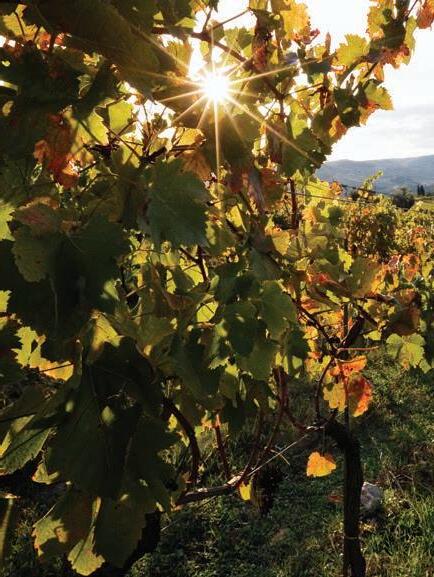
brand is a huge opportunity.
“I remember having Bush Molesworth Honey in the cupboard as a kid.
“…Loving the product, wanting to see the brand continue, and having gone up the Molesworth and Awatere to meet suppliers has been a great introduction to the business.
“I’ll be continuing Bush Honey’s face-to-face relationshipswhich my old man taught me is so incredibly important – while Sarah, whose family is from Marlborough, is looking forward to working with an established, locally focused brand.”
The fill-your-own facility on Old Renwick Road will be closing its doors, however Matt says they have plans in action to keep locals supplied.
“It’s been quite astounding to see the different kinds of jars bring in, but for now we’ll be based out of the Saturday Rotary Market at the train station.
“We’re going through Council approvals to get a fill-your-own shop back up and running, then hopefully diversify our labels and find a proper premises.”

A new digital tool for aphid management in cereals aims to provide growers with a “one-stop shop” of easy to access information, helping them decide if they need to use insecticides or not.
Developed by the Foundation for Arable Research (FAR), together with HortPlus, Aphid Chat is a web-based information platform. It contains real time data which helps inform the degree of aphid risk to a crop, as well as information about beneficial insects that prey on aphids, cultural controls such as rotations and different cultivars, and chemical options and their impact on beneficials.
Chris Smith, FAR Technology Manager, describes it as a “onestop shop for everything to do with aphids” and says the genesis for the tool was growers themselves.
“People have been saying they can’t find the information on different data sources, they wanted everything in one place. It was about bringing together the most recent and relevant information sources, so it’s all on your phone, or a website, where you can look at it instantly, rather than refer-

A new tool called Aphid Chat may be the answer to providing data on whether an insecticide is needed before spraying, reducing cost and labour. Photo: Supplied.
ring to a paper copy,”
“It also considers weather data from HortPlus, the growth stage of the crop, whether growers used insecticide on their seed, and aphid monitoring data. It draws on all that information to make a recommendation on the level of pest risk to the crop,” Chris says. Aphid Chat incorporates the regional aphid monitoring data that FAR collects across a range
of sites, measuring aphid and beneficial numbers on a weekly or fortnightly basis. FAR senior field officer Ben Harvey says the monitoring programme is part of FAR’s A Lighter Touch work, which aims to give growers the tools to take a more integrated pest management (IPM) approach to crop protection.
“We saw too many growers using a calendar spraying system for
insecticides. Not only is it more expensive, it’s not good for biodiversity, especially the beneficial insects that are in the crop that can help manage pest insects like aphids,” Ben explains “Its important growers have the information to make a decision on whether they need to spray an insecticide right now, or this season at all. By providing them with this data in such an easy way through Aphid
Chat, it supports them to just have a think about whether an insecticide is needed before they spray.”
Ben says the aim of having a onestop shop, with the information growers need about the pest and beneficials, is to increase uptake of IPM. He emphasises Aphid Chat won’t tell growers whether to spray or not, that decision rests with the grower, but the tool helps inform the grower’s decision. FAR is also using the tool to encourage growers to do their own monitoring, as well as using the data FAR provides.
“That’s always the best approach, knowing what’s going on in your crop. And with Aphid Chat, growers have more tools than they had before. The information is right there about how to go look yourself, what you’re looking at, and what you’re looking for,” Ben says.
As a new innovation, FAR describes Aphid Chat as a work in progress and welcomes grower input into suggestions for how to improve the interface or information. If the platform proves popular with growers, similar technology will be developed for other pests and diseases in other crops.

Hidden in Big Pokororo Valley are four lifestyle blocks, being off grid these lots offer the perfect escape from the city with a rural lifestyle.
Sunny, sheltered, productive with flat to sloping contour. All have their own unique view of the surrounding rural land out to the hills and to Mount Campbell. The drive into the blocks is park like with trees and a stream. All blocks are fenced on the boundary and well thought out to give each property its own privacy.
Lot 1: A private 1.6 ha, surrounded by wellestablished trees, offering unmatched privacy and its own entrance.
Lot 2: A spacious 2.5 ha, also holding beautiful established trees, ideal for creating your own self-sufficient lifestyle.
Lot 3: A generous 2.3 ha, providing plenty space to design your perfect home and lifestyle stock.
Lot 4: 1.4 ha, being at the end of the group, some of the neighbouring land is rural farmland which gives the feel of really being in the country.
Lot 6 + NL2A/238 = 95.36 ha approx. Bare land. Already in grazing paddocks that are well fenced, free of weeds and good access tracks. Great opportunity to build your dream home and run some stock. Currently there is an offer on the property, we are happy to discuss this opportunity with you - sale price will be + GST (if any) and subject to final survey and amalgamation.
Take the opportunity to build your dream lifestyle in Ngatimoti and experience the freedom of self-sufficient living, while having land for your lifestyle pets, and grow your own fruit and vegetables. Don’t miss out on these prime Lifestyle Blocks—contact one of us today for more information. For sale subject to issue of Titles.
432 8532 | lydia.heyward@bayleys.co.nz
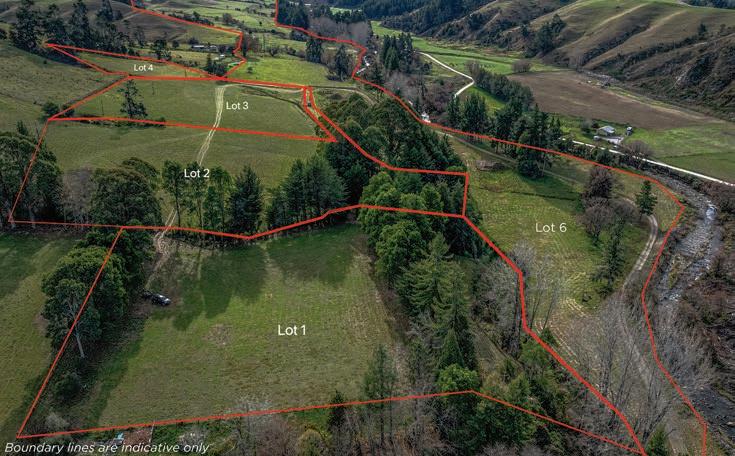

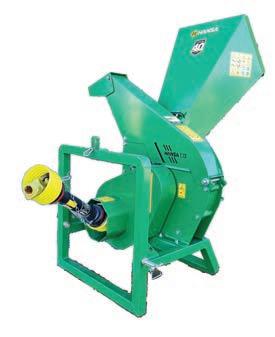


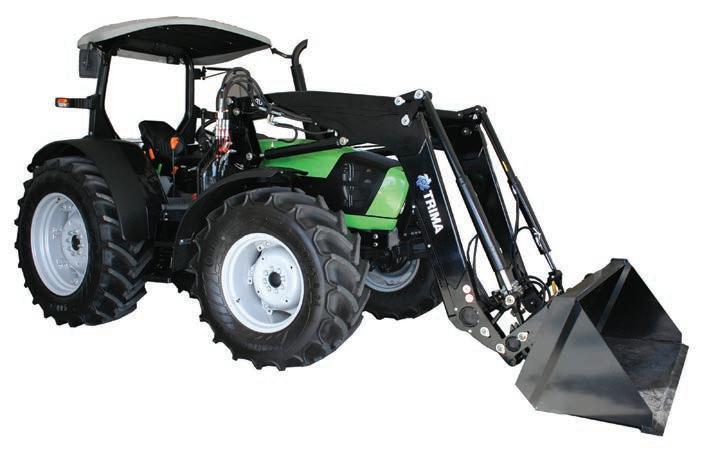

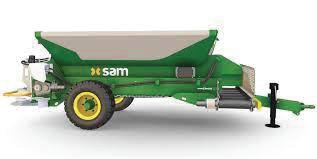
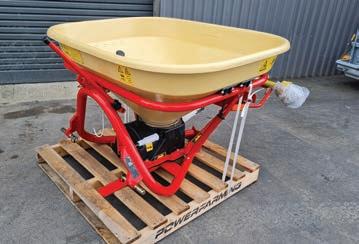
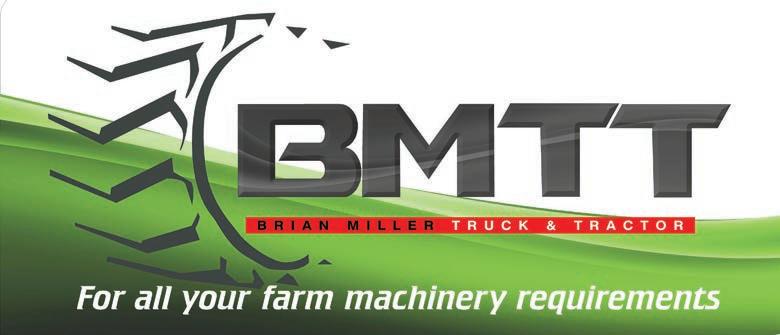
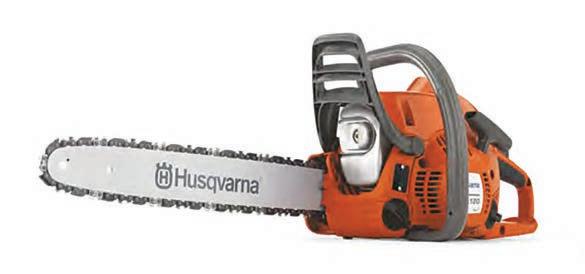


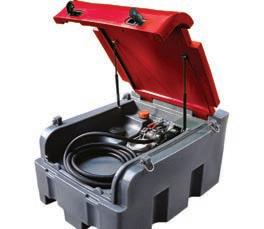
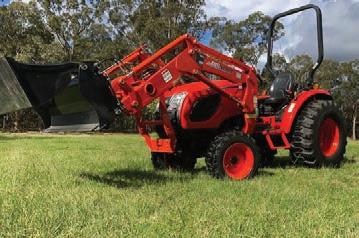





Septi-CureTM is:
Cost Effective
Easy To use
Improves Soakage
Reduces Solids and Scums
Eliminates Nasty Odours
Reduces Costly Pump-outs
A satisfied customer in Hamilton has been using Septi-Cure™ for over five years.
He says this allows them to have an odour free septic tank with low maintenance costs. He also says that his service person is amazed at how well Septi-Cure™ works, keeping their tank in very good condition.
*Results may vary


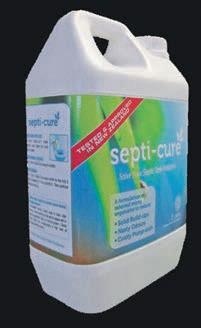
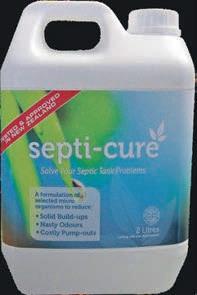
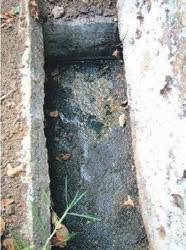



Tight margins are set to continue for many New Zealand dairy farmers, due to inflationary pressures, as shown in the latest forecasts released on DairyNZ’s Econ Tracker. DairyNZ’s head of economics, Mark Storey, explains that despite a reasonable farmgate milk price payout predicted for the current 2024/25 season, high costs and inflation are continuing to affect farmers’ bottom line – with interest rates the highest non-operational expense. “The recent opening Fonterra farmgate milk price forecast for this season of $7.25 - $8.75 per kg/MS, with a midpoint of $8 per kg/MS, was in line with expectations, and many farmers would have been planning for this, while optimistically hoping for more,” says Mark. “Despite these strong prices, high expenses continue to erode farmers’ financial positions.”

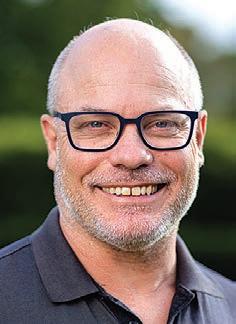
margins for dairy farmers.
While farmers have shown their ability to adapt, continued low margins will inevitably affect their ability to respond to shocks and adverse events,”
analysis shows that at an interest rate of 8.25 percent, around 40 percent of farms would pay more than $2.00 per kg MS,” says Mark. “Our analysis illustrates the significant impact of non-operational expenses, in particular interest costs, on farmers’ cash positions – a critical factor influencing the resilience of farms over time. We know that farmers will be working closely with their advisors this season, to manage the expected limited operating profits.”
DairyNZ’s latest forecast data on the Econ Tracker shows the national breakeven forecast currently sits at $8.07 per kg/MS. This is below DairyNZ’s forecast average payout received of $8.34 per kg/MS. “We have now seen several seasons with tight profit
One of DairyNZ’s three strategic priorities is to power more adaptable and resilient farms, by providing key industry analytics and insights. The Econ Tracker is a key part of this work, as it can help farmers budget around these tight conditions and improve resilience in the long term. The June quarterly update includes an analysis into non-operational expenses, including interest and rent, tax, and net drawings, and what findings from the 2022/23 season can mean for this season. “In the 2022/23 season we saw non-operational expenses account for 42% of farms’ total expenditure, with interest rates being the highest of these expenses. The
The Econ Tracker is a robust tool, which uses DairyBase and other sector data to form the forecasts which are updated quarterly. It is used to support farmers and the sector to progress a positive future, including supporting DairyNZ’s science, research and development work alongside farmers. Farmers and rural professionals can use this tool to help with financial planning, forecasting, and budgeting. The new forecasts are published on the DairyNZ Econ Tracker and expressed as national or regional averages, which does not necessarily reflect individual farm situations. A quarterly update, focused on non-operational expenses, is also available online. The Econ Tracker can be accessed at dairynz.co.nz/econtracker
Thanks to a national effort from New Zealand dairy farmers in response to Mycoplasma bovis (M. bovis), the Biosecurity (Response – Milksolids) Levy reduced from 2.4 cents per kilogram of milksolids to 0.8 cents per kilogram of milksolids on the 1 July 2024.
“When the sector works well together, we get results,” says DairyNZ chair Jim van der Poel.
“The 66 percent reduction in the levy dairy farmers pay reflects the good progress made in response to M. bovis. While we may still see a few more cases, we are now approaching the surveillance phase and costs have reduced, thanks
to a combined effort.”
The M. bovis Programme is now six years into a 10-year eradication plan with currently no active, confirmed properties.
DairyNZ is a partner in the programme, with the Ministry for Primary Industries (MPI) and Beef + Lamb NZ.
DairyNZ director Chris Lewis says the decision to reduce the Biosecurity Response Levy was made with confidence.
“We’re in a good place right now and this levy reduction will be some relief to dairy farmers, ensuring they do not pay more than is required. The programme to eradicate M. bovis has been at a huge financial and emotional cost to New Zealand
farmers, yet the cost of letting it spread would have been much higher.”
The M. bovis eradication programme has cost around $722 million to date. It was estimated the cost of letting it spread would have been $1.3 billion in lost productivity in the first 10 years alone. Lewis says that around 98 percent of New Zealand dairy farmers have helped the 2 percent of farmers affected by M. bovis. “The Biosecurity Response Levy has been invaluable in the response to M. bovis. Without the collective effort of dairy farmers pitching in, we wouldn’t be where we are today with a stronger, more resilient biosecurity system.”
ELOISE MARTYN
Gavin O’Donnell epitomises all of the qualities necessary to be awarded a Queen’s Service Med al. The award recognises recip ient’s voluntary service to the community - in Gavin’s case the rural community.
The award was part of the New Year’s Honours List, 2024. At the end of May, Gavin, his wife Sue, and their family attended a ceremony at Government House in Wellington, where Gavin was honoured with the Queen’s Ser vice Medal, to recognise his ser vice to the rural community and conservation.

Gavin is renowned for his farming contacts and wide range of voluntary rural involvements across the top of the South Island, including Golden Bay, Tasman, Nelson, and more recently Marlborough since relocating to Havelock on retirement.
He said that receiving the QSM and being involved in the ceremony was a moving and memorable experience that he was thrilled to share with his family.
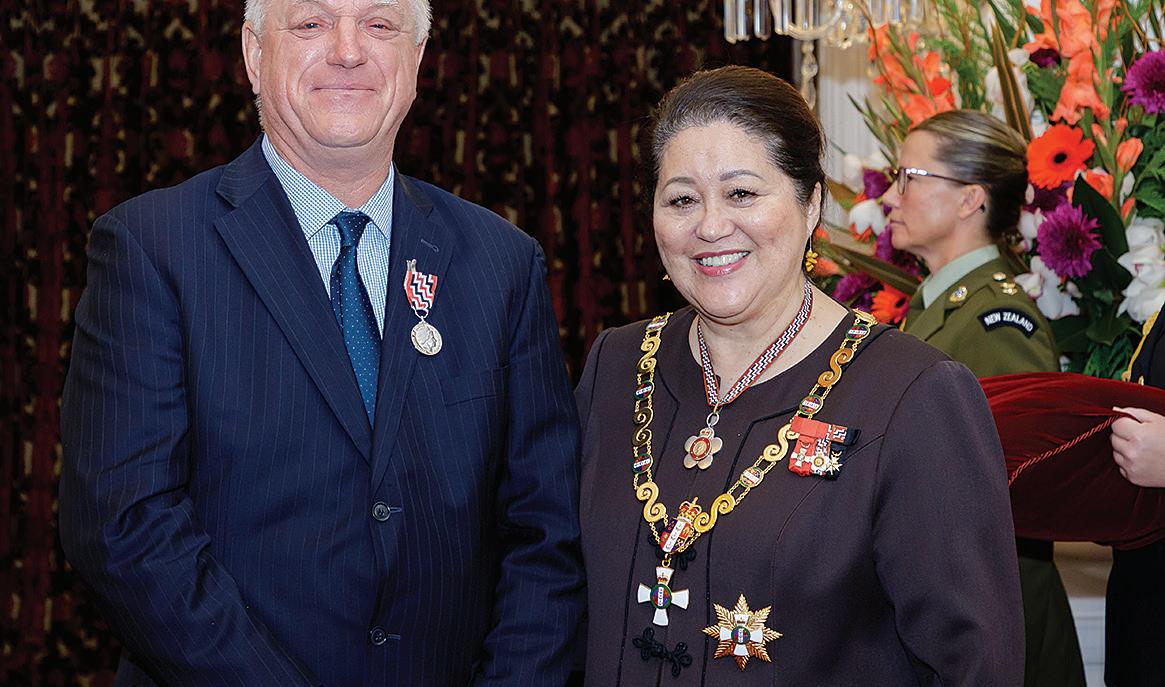
Gavin played a key role in setting up the Ministry for Primary Industries Rural Advisory Group (RAG), and various roles with Nelson Federated Farmers, including as Chairman from 2011 to 2014, Treasurer from 2014 to 2022, and previously Meat and
Wool Representative from 1996 to 2000.
He is a member of the Nelson Tasman Primary Cluster Adverse Events Network. He is also a voluntary member of a range of environmental groups in the Nelson/ Tasman areas, including Federat-
ed Farmers Trustee on the Tasman Environmental Trust Board, Waimea Fresh Water and Land Advisory Group, Biodiversity Forum, Regional Pest Management, and Tasman Bay Guardians.
Gavin helped landowners following 2017 Cyclone Gita, contacting


people affected by slips and flooding in the area, and was a Waimea Rural Fire Authority Emergency Response Team member. During the Pigeon Valley fire, he was part of the initial response management team with logistics and resources responsibilities.
In 2011 Gavin organised teams to repair fences following an adverse weather event hitting coastal Nelson and more recently helped with on-the-ground intelligence, donated feed supply logistics and allocation, following the 2022 flooding that impacted many areas in the Sounds, Marlborough, and Nelson.
During that time, he was appointed a Marlborough Rural Support Trust Facilitator. He has been a volunteer firefighter since 2006, a member of the Waimea Rural Fire Emergency Management Team, and a committee member of the Ngatimoti Volunteer Rural Fire Brigade. Gavin was involved with the Canterbury Agricultural and Pastoral Association’s planning and development of the new Canterbury A&P showgrounds from 1992 to 2000.

Stuart Smith MP for Kaikōura
Budget week was the first fiscal step towards getting New Zealand back on track. I am proud to be part of a government that believes it is only fair that hard working Kiwis should keep more of what they earn. You can find out exactly how much you will receive by visiting the tax calculator at www.budget.govt.nz/taxcalculator
While some have labelled it as an austerity budget, with expenditure over 33 per cent of GDP, it clearly is not. One of the major lessons from the previous government is that measuring success by how much money a government spends is foolhardy. The previous government spent more and delivered less. Education, expenditure significantly increased however achievement and attendance significantly decreased. Expenditure on health went up, but that was directed towards restructuring the back office and introducing a two-tier health system, while waiting lists grew.
Finance Minister Nicola Willis is ambitious for New Zealand and has changed direction to drive value-for-money and a careful approach with your tax dollars. And she had to as the unforeseen fiscal holes left by Labour were revealed after the election. The most egregious hole was the Pharmac hole which has forced a delay in the new cancer drugs but deliver them we will by finding more enduring savings, department by department.
We already there have been some quick wins with a great example being the school
lunch program where we will save $104 million of your taxes and yet feed 10,000 more children. Shifting Fees Free from the first year of study to the last rewards students when they complete their studies and saves a further $219 million per year. As I travel the electorate, the feedback has been overwhelmingly positive with encouragement to go further and faster. That said, our farmers in North Canterbury are doing it tough with the extreme drought conditions still pervading even as winter draws in. I am bringing our lead on the Primary Production Select Committee to North Canterbury on Monday 15 July to meet with farmers and get a first-hand look.
It is such a pity that the Hurunui Irrigation Scheme did not get off the ground after all the work that had been put in by local farmers. The situation would be quite different had that irrigation been available this year. Irrigation schemes always seem expensive before they are built and yet would appear cheap in times like these, had one been built.
I hope the community realise that a properly designed community irrigation scheme has benefits for the entire community as well as environmental benefits by enhancing low river flows and bolstering urban water supply.
In the meantime, spare a thought for our farmers. They work incredibly hard every day of the year delivering much needed export dollars that enable our country to enjoy the standard of living and the freedoms that come with it.
Ever been into a commercial forest? The reality is that even though wood is a renewable product, essential to the modern way of life, generally the market dictates what is valued, and for forestry this means big logs. The remaining slash (branches, stumps and offcuts) is known as wood residues and is often considered a waste product.
Forestry company OneFortyOne believes that this wood waste is both a design and a market flaw and is putting its collective minds towards finding useful applications for this wood fibre previously only viewed as a problem.
Mark Coghill, OneFortyOne Operations Manager, says the company has invested close to a million dollars into the biofuel project since late 2021. “The majority of the investment made has gone towards collecting, measuring and storing the wood fibre. Over the next five years we hope to reduce the amount of wood waste (or slash) in our forests by at least 75,000 tonnes. That’s enough wood to fill 2,000 logging trucks,” he explains.
In a recent breakthrough, the company has signed a new five-year agreement with Canterbury Woodchip Supplies which will see wood fibre previously left in the forest now turned into biofuel, with some of the wood being used in J.S. Ewers’ new biomass boiler.
Removing such a massive quantity of otherwise unvalued material from the forests and turning it into biofuel in the form of woodchips could help local businesses avoid burning more than 22 thousand tonnes of coal over five years, says Coghill.
Coghill says slash is often regarded as a problem for the forestry industry generally but notes that OneFortyOne decided to look at it as an opportunity instead. That led to talks with Canterbury Woodchips, a seasoned operator producing various processed wood products for use in parks, playgrounds, as animal bedding – and industrial boilers and other heating sources. Coghill notes ‘huge potential’ for the project if scaled up, adding that ‘it could be a game-changer for New Zealand in creating a sustainable source of bioenergy.’
JOE BLAKISTON PGG Wrightson
The rains we have received in June are welcomed across the region and hopefully will be the start of a healthy winter recharge of all our waterways.
I guess I am saying that we need a traditional Top of the South winter, short and sharp with a good southerly storm or two to put some snow on the hills early. That will keep the skiers happy I know but it has been a few years since we had what you would call a real dump of significance and the aquifers and waterways have only just scraped through.
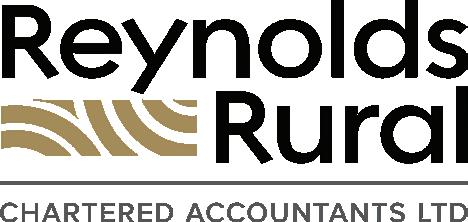





Talking to our Fruitfed teams that report a lot of effort is going into building water storage dams in the Wairau and Awatere Valley areas as water allocations become more tightly managed. The land is worth so much more with a secure water supply so all the diggers, dozers, and trucks you see on these traditional dry land properties are adding huge value – at a huge cost as well.
Real estate markets have taken a traditional breather in June as buyers and sellers alike try to work out where the market is at. There is a lot of conservative sentiment among buyers as they read the headlines and see the messages being sent by banks and government sources. Stubbornly high Interest rates and low
product prices are the main focus of conversation with increasing operating costs adding to the perfect storm. In saying that though people’s lives move on and I have said for years that willing buyers and willing sellers will always get a result as it allows you to move along with your lives. Spring is likely to be very busy as we have plenty of activity from vendors seeking to capitalise on the traditional busy sales period.
Our PGG Wrightson Real Estate sales team has plenty of advice and experience to give you the right, honest advice and get results, and with the benefit of over 1000 sales reps across the whole PGGW network, we have the capability to find you the best deal whether buying or selling.
With winter upon us and a quieter time on the farm, why not take the time to get off the property and have a look at our beautiful district without all the crowds around? Our recent clearing sale in Rai Valley reminded me of the benefits of getting off the farm and seeing life outside your gate.
I have attached a couple of amazing photos taken on a recent weekend ramble where I am constantly amazed at the beauty on our doorstep that we can enjoy for free.
As always have a great month and keep warm!


We are extremely pleased to be celebrating the completion of an important project to refurbish and make more resilient sections of the Motueka River stopbanks.
Over the last three years, work has been carried out on 10 sites across a five-kilometre section of the Motueka River, to enhance flood protection measures.
The stopbanks were initially constructed in the 1950s and 60s and have deteriorated since, increasing the risk of failure and inundation of approximately 1,400 hectares of surrounding land, including the northern extent of Motueka town.
Phase One was completed in late 2021, and included sites at the end of Whakarewa Street, Old Mill Road and Blue Gum Corner.
Phase Two began in March 2022 with work at River Road, Lyndhurst Drive, Parker Street and Douglas Road.
The third and final phase involved an extension of work at the end of Whakarewa Street, additional work at

Hurley Bank and Brooklyn Stream, adjacent to the Plant and Food Research Centre, and Peach Island. The back channel of the Motueka River at Peach Island was also cleared of debris deposited during Cyclone Gita. Repairs involved adding compacted clay to the front and top of the existing stopbank. The aim is to resolve
two types of issues:
• Raising the crest of the stopbank in areas where it is no longer high enough to provide protection from a 1-in-50-year flood event.
• Repairing the stopbank in areas where it might have weaknesses that could cause it to fail in a large flood event.

The intensive winter grazing rules remain in effect for this winter and Council staff will be out catching up with those farmers who are grazing crop through until 30 September. Information around these rules can be found on our Rural Hub website with the main points being:
• Keep a 5m buffer from waterways
• Do not graze critical source areas, leave
Synthetic Nitrogen Reporting
them with ground cover
• Slope of the grazed area to be under 10 degrees
• Minimise pugging
• Resow as soon as practicable.
If you wish to discuss your winter grazing or anything else please contact us via rural.info@tasman.govt.nz or ph 03 5438400.
It’s that time of year again for Dairy Farmers to report their Synthetic Nitrogen Use for the period 1 July 2023 to 30 June 2024. As in previous years there are 3 reporting tools available to assist with this, head over to our Tasman District Council Rural Hub website for further details and links. This information is due 31 July 2024, if you have problems with this reporting please contact your Fertiliser Agri-manager or council staff.

The refurbishment improves the integrity of the stopbanks and provides safer access for ongoing maintenance. The total value of the project is $10 million, of which Central Government funded $7.5 million via the Covid Response and Recovery Fund.
In June, we officially acknowledged the completion milestone with an event held on the Whakarewa Street section of the stopbanks.
Despite the chilly day, it was a great opportunity to thank those directly involved in delivering this, from our iwi partners to the crew at Taylors Contracting, who have navigated Covid disruptions and weather events that have tested the stopbanks to get the job done.
We also received some wonderful feedback from the community about how the improvements will make the Motueka River more resilient to future floods.
Thanks to everyone who has supported this project to reach an extremely positive outcome
We are currently drafting Land and Freshwater Plan Change 84 to the Tasman Resource Management Plan. This change aims to address priority land and freshwater management issues in the region, including introducing provisions to support the Water Conservation Order for Te Waikoropupū Springs. It seeks to address waterbody health, water quality, water allocation and sediment issues across the region. It will focus on addressing areas of risk and filling gaps where existing management and national regulation are not meeting the needs for Tasman freshwater management.
Priority issues for Plan Change 84 are:
• Support for Te Waikoropupū Springs Water Conservation Order.
• Updating the plan provisions for the Waimea Com-
munity Dam and management of nitrates in the Waimea Plains aquifers.
• Allocation concerns in some catchments, including the Deep Moutere Aquifers.
• Land disturbance and sediment management.
• Waterbody health and management.
• Waterbody and community resilience to our changing climate.
We are working towards releasing a draft of Plan Change 84 as soon as possible this year for public feedback. The draft will be informed by ongoing discussions with iwi, landowners and water users, stakeholders and interested parties. Feedback from this process will help inform changes to the final plan change.
To find out more about this work, visit shape.tasman. govt.nz/LFPC84.
For all things farming – go to Tasman Rural Hub www.tasman.govt.nz/tasman-rural-hub-2
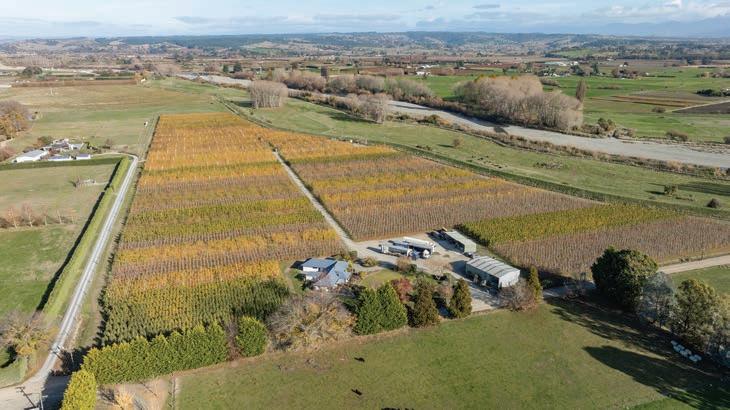
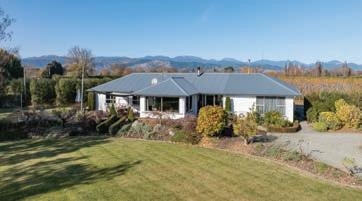
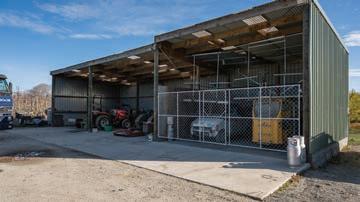
859 Lower Queen Street, Richmond
Impeccably nurtured and encompassing 10.5ha of flat productive land on the outskirts of Richmond this apple orchard features modern varieties, zoned irrigation, large sheds, workshop and a 5-bedroom home.
The house is well designed, with the kitchen, dining, and lounge areas at its heart, leading onto extensive decking and overlooking the immaculate lawns. With 5 bedrooms, two bathrooms, large garage and utility this home provides fantastic versatility. Just 5km from the centre of Richmond, and right on the Great Taste Cycle Trail.
Well located, well managed and certainly worth a viewing!
Offers Over $2,490,000+GST (if any) Ref: LR41722
Seldom do farms of this size and quality come to market in the Nelson or Tasman District so make the most of this opportunity. Offered for sale is Birchwood Terraces; 701ha of freehold land in three titles including extensive elevated terraces with easy contour, a large tract of native forest, streams and good level of improvements.
The majority of the grazing is below 400m above sea level with a gentle north westerly aspect. The slope, aspect, good rainfall and high sunshine hours makes for a highly productive and versatile grazing unit over approximately 330ha. The balance comprises over 300ha of native beech forest plus approx. 50ha of plantation forest land.
With well-established infrastructure including two dwellings and a cottage, comprehensive stock handling facilities, excellent roading, good sheds, quality fencing and stock water systems.
A Rural 2 zoned property on this scale offers significant development potential and plenty of options, so call now for your information pack.
View by appointment
Tenders close Thursday 8th August 2024, 1pm at Summit Richmond (No prior sale)


Arapaoa Island, Marlborough Sounds
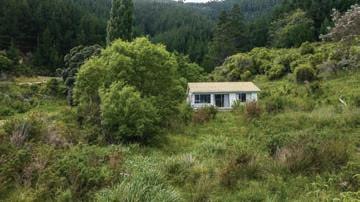
And back down the other side. This property spans Arapaoa Island from Waikakaramea Bay, Queen Charlotte Sound on the northern side, to Deep Bay and Tory Channel on the southern coast.
The land consists of 16 titles and covers 516.4ha and is available as a whole or as 125ha or 391ha parts. The property touches the coastline in seven different places and has about 6km of coastline, with multiple bays, beaches and two prominent headlands in the Tory Channel. The opportunities this creates for multiple baches, an extended family landholding, large-scale development project, or tourism venture are exciting.
The property is in a mix of native and pine forest and benefits from an extensive network of roads and tracks. It also includes a house with mains electricity, jetty, mooring and barge loading ramp.
From $1,500,000+GST (if any) Ref: LR41257
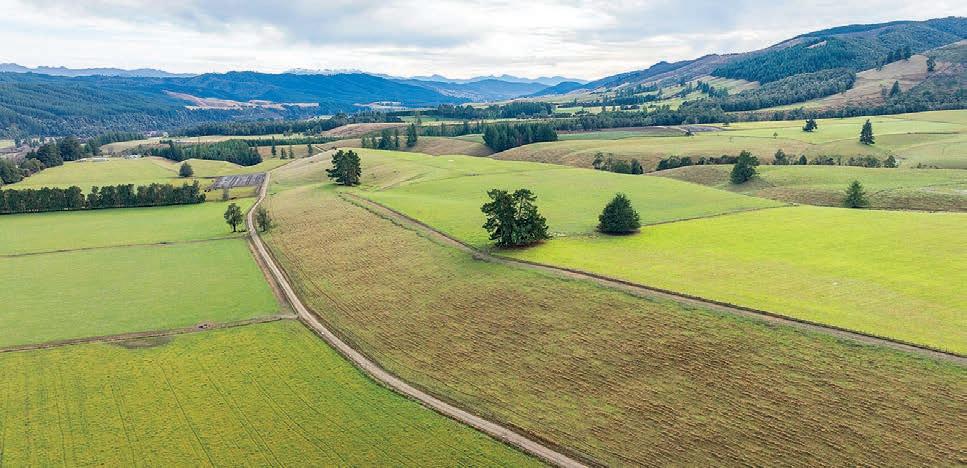

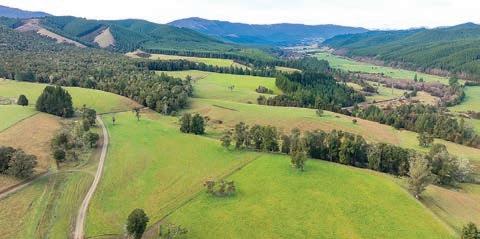
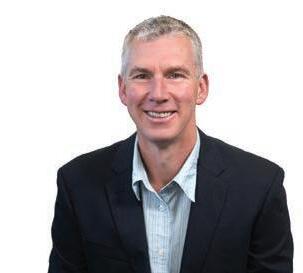
GARRICK BATTEN
Men of a certain age with influences from WWII can remember making balsa wood models of various aircraft. After peace provided metal for toys, not guns, there was Meccano for boys, and older men could resume work on their model railways. Some were more influenced by models like Ellie MacPherson. Now, we have models built with computers that have much wider influences on our lives and are becoming dominant.
There are significant limits to this modelling enthusiasm. Whatever the model, it is based on information selected by someone who may or may not fully understand those inputs. Then, it is plugged


into a computer programme that is assumed to adequately analyse the data to produce a result because the model says so. Computer magic creates these models, so they are taken as gospel on which to base decisions for the ever-changing future, even though based on history.
It may be the model that tells you to insure your house for more than it’s worth. It may be industrial models like the Top of the South’s ability to meet up
to 72% of its energy needs from biomass without including every factor in achieving that. It might be a recent central UK model of solutions for sustainable food supplies, biosecurity, and climate change, ignoring some associated practical, social, and economic effects.
Academics, scientists, and policymakers use modelling inputs from their peers or from a limited survey with carefully crafted questions; they can rank those
As the leaves changed colour and the seasons shift, it’s an excellent time to sit down and reflect on your life’s work - the assets you’ve worked hard to accumulate. Are they secure and sufficiently planned to be delegated as per your wishes? This is a crucial question that drives the need for an effective estate planning strategy. Estate planning is far more than just a legal process; it’s about ensuring the right division and management of all you’ve built in your lifetime, securing your loved ones’ futures, and entrusting your legacy into capable hands.
Use this time to review your will or perhaps create one if you’ve not already done so. Unfortunately, it’s estimated that about 50% of New Zealanders don’t have a will in place, primarily because they’re under the impression they don’t possess significant assets to warrant one.
If you’re under the impression that being in a relationship means your spouse automatically receives all your assets upon your death if you don’t have a will, it’s time for a reality check. If you have no will your assets are distributed pursuant to the Administration Act 1969. If you have a spouse and children, your spouse will receive your personal effects, $155,000 and the remainder will be split 1/3 to your spouse and 2/3 to the children.
Blended families
higher than unpublished records of what people actually know and remember. The answer from the self-created model framework is lapped up by social and other media, especially if it is negative. Computer power and more people with screen eyes generate results for various reasons. They believe their models, using averages and figures from their machines, can apply but only sometimes understand the limits of their computer-based activities. It is easy to see flaws in models based on ignorance or bias, so their models are not publicly available to be examined or challenged. Possibly the worst recent example has been Climate Change Commission’s recommendations for reducing farm emissions based on models repeating the myth that all farms, farming systems and farmers are the same and ignoring cost-benefit analysis.
ance about the distribution of their assets, both during their life and beyond.

Estate planning can become complicated for blended families. Concerns might include where your assets might go if your partner remarries after your death or if they might prioritise their children over yours from a previous relationship.
Mutual wills can be an efficient tool for some. This type of will involves an agreement between two parties, where they both promise not to modify their wills without the consent of the other. Such an agreement can establish a sense of assur-
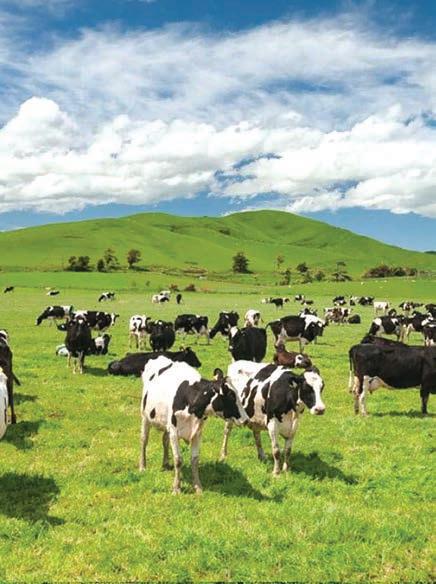
Philosophers have searched for solutions to life’s questions for centuries. Aristotle and Ptomely introduced the principle, later amplified by Friar William of Ockham with Occam’s Razor, that the simplest solution is often the right one, even though that can over-simplify and lead to wrong conclusions. Einstein’s opinion was that for every complex question, there is a simple and wrong solution. Georg Bax claimed that all solutions are wrong, but some are useful. Others are now desperately trying to find solutions using models. Still, recently, a world-renowned scientist noted that all models are wrong but the best we have.
Modelling’s influence on farming is becoming oppressive. It also seems it’s replacing catwalk clothes-horses and traditional Lies, Damned Lies, and Statistics. AI will enhance that.
Life interest wills can also provide security for your surviving spouse or partner, whilst ensuring your legacy is sustained long-term for your descendants. The survivor can utilise the asset throughout their lifetime and on the survivor’s passing, the asset passes to the specified recipient in your Will, for example, your children.
Trusts
Trusts can play a key role in estate planning. They offer a versatile, efficient and effective method of property and asset management, distribution control and protection against creditors. By putting effort into careful review and planning now, you’ll be sparing your beneficiaries from future complications and uncertainties. With thorough
planning and professional guidance, you can safeguard your legacy and secure your loved ones’ future. Once done you’ll have peace of mind that you have a sound estate plan in place.



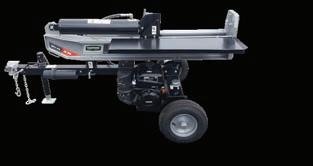



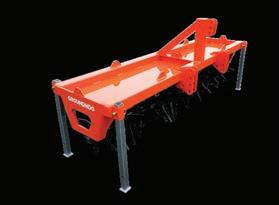



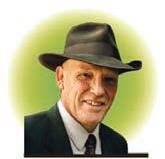
We were young, energetic, highly indebted, and determined to show that we could make stuff happen. Winter cropping, the norm for the previous generation of farmers taking on low fertility properties covered in browntop, was dismissed as old school. ‘Hoof and tooth’ was the mantra of the time and any suggestion that fewer better fed animals might be beneficial was quickly dismissed by those at discussion groups. The concept of all-grass farming was embraced, and short even covers were the sign of progress, however we also knew of a farming family close by doing things differently. They were from Europe, their animals were much bigger, and they fed a lot more supplement, including molasses. They weren’t alone, there were a handful in the district focussed on fully feeding their stock.
As our focus was high utilisation of pasture because that’s supposedly where the profit was, ‘expensive’ supplement was somehow seen as cheating and those doing so didn’t attend discussion groups. Our reference then became those also chronically underfeeding often well-bred and reared animals. Looking back, we sometimes wonder why we didn’t follow our instinct and reduce animal numbers and feed them better. However, banks encouraged higher animal numbers as they were part of the total farm equity, and large factories were dependant on ever increasing volume to provide a payment to farmers that was just a little above that required to survive from one season to the next. Cows, operators, families, and land were under stress resulting in youngsters brought up on farms opting where possible for vocations in towns and cities.
There are cycles in all things and the future of dairying increasingly looks like smaller factories providing specialist niche high-margin market products. To meet the quality standards and traceability farms may well shrink in size with fewer elite animals fed higher energy, fibre, and full-protein rich diets. Less synthetic nitrogen will be applied to increasingly diverse species pastures with products sold as pasture based, as distinct from grass fed. One thing however won’t change and that is the reliance on clover as the foundation of our permanent high producing pasture. Because clovers fix nitrogen in response to an increase in demand from rapidly growing grasses and herbs, a negligible amount is lost to groundwater. And because it is under permanently grazed pasture that carbon is most readily sequestered, intensive dairying will be recognised as an environmentally desirable activity and will occupy high quality land close to major urban centres.
The farms, along with the data necessary to support the above vision, already exist, and a return akin to that of the town-supply farms that existed in the 1960’s and 70’s almost certainly will re-appear. It’s an exciting future for those prepared to break from existing constraints. There’s a lot to learn however for those that embrace the vision it’s a stimulating and thought-provoking process that can be enjoyed with an ever-increasing support group.

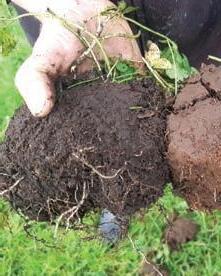
CalciZest. Applied from a spreader, this is a unique soil improver containing Calcium, Bio Carbons and selected microbes for increased plant growth and optimum soil health. DoloZest. Also applied from a spreader, Dolomite is a natural soil conditioner. A synergy is created by blending with the unique Zest component which makes it a fast-acting magnesium fertilizers and kick starts the process of building soil humus.
This fertiliser


As calving season approaches, so does the increased risk of sprain and strain injuries for dairy farmers. Scientists and farmers have joined forces to find ways of avoiding these common injuries during spring, to help farmers keep farming when they are at their busiest.
DairyNZ’s three-year Reducing Sprains and Strains project set out to understand the common causes of injuries and work with farmers to develop practical solutions to reduce them
on New Zealand dairy farms. DairyNZ has worked with manufacturers to help develop and produce some of the successful solutions. This includes Kea Trailers who are now selling the popular Easy-Entry Calf Trailer Gate, and Gallagher who are taking expressions of interest for the Easy-Access Calf Pen Gate.
“The successful workshop concepts were built into physical prototypes with the manufacturers, and then tested and refined based on farmer feedback. It includes the calf trailer gate, which was intensively
tested by farmers last calving season, then refined to ensure it is farm ready,” explains Callum.
“New Zealand has many different farm types and so the solutions aren’t a one-size-fits-all. However, the project’s co-design approach, with farmer testing, feedback and refinement, meant the creation of tangible options for farmers to reduce these injuries on-farm.” The project was funded by ACC’s Workplace Injury Prevention Grants programme, with co-investment from DairyNZ.
Facial Eczema no longer only a North Island problem
Facial Eczema is working its way south and farmers are being warned to keep an eye out for the tell-tale signs of the disease.
At a recent information day held on Tempello farm in the Brancott Valley attendees were told that the FE (Facial Eczema) problem is working its way south.
FE is caused by spores of a fungus pithomyces chartarum which grows on litter at the base of pasture. In 1981 an outbreak in the North Island caused a loss of production estimated at $266 million. Sheep swallow the spores which release a toxin that can cause severe injury to the liver and bile ducts. Bile then builds up in the blood stream causing sensitivity to light. Affected animals will seek shade and can be seen rubbing their heads against posts and gates. Reddened ears and swollen eyes followed by scabbing on the skin which may become infected, or fly blown.
Not all animals exhibit obvious symptoms but may lose con-
dition, have reduced growth, high lambing mortality and substantial foetal loss following scanning. There is no treatment for liver damage, but stress can be relieved by shade, a good supply of water and a diet of hay or silage.
A farmer’s forum on the day with speakers Freddie Gane, Rod Hopkinson and veterinarian Mary Bowron outlined their experiences with FE.
Freddie believed it had been present on his farm Kaituna Ridges for at least 30 years, but diligent culling of lean animals by previous owners may have kept the problem at bay.
Rod farms in the Keneperu sounds and blood tested 600 hoggets that did not seem to be thriving. All were found to be affected by FE and were culled. They were replaced with stock genetically selected for tolerance to FE.
Mary Bowron stressed the importance of monitoring spore counts in pasture. Counts as low as 30,000 per gram of grass could be enough to cause liver damage in more sensitive animals. The spores multiply from January to May and thrive in
humid and warm conditions.
Over 200 hundred farms in the country are involved in carrying out a programme of monitoring faecal egg counts. Eight farms currently contribute to the data in Marlborough, but the monitors are keen to have more participants. Your local vet would be the first place of contact for those keen to take part.
To combat FE buying replacement rams from breeders who are selecting for FE tolerance is encouraged. Zinc boluses can give up to six weeks protection and fungicide spraying before the onset of the FE season will reduce spore counts for five to six weeks.
The incidence of the disease is most severe on pastures where perennial ryegrass is dominant and where they have been closely eaten. Chicory, plantain, tall fescue and legume crops such as lucerne and clover can be utilised as FE safe pastures. Safer areas on your farm can be shady south facing slopes and those facing prevailing drier winds. Incidences of the disease have been found as far south as Otago.
Before it gets crazy busy with lambing now is a good time to stock up on the supplies you will need. Remember that swift intervention and good hygiene practices are essential to keep your lambs and ewes healthy. Now is your opportunity to set up for a successful spring period and ensure you have enough supplies on hand to see you through. Listed below are some common yet essentials items however every farm is different, so we encourage all famers to build their own supply list and refer to it each season. Iodine spray, Disinfectant, Dextrose, Woolovers, Anti-inflammatories/Pain Relief (e.g., Metacam), Tube Feeders and Colostrum.
Don’t forget about the ewe
The lambing period demands a lot of energy from your ewe, from lambing, lactating and chasing the runaway lambs. Make sure you have also stocked up on metabolic treatment (e.g., glucophos bags and ketol) in case your ewe looks like she needs a pick me up. Having bearing harnesses on hand also means that swift intervention can be taken, increasing the chances of resolution.

1. Get everything ready for lambing in good time and be prepared for those surprise very early lambs.
2. Have plenty of good colostrum (sheep, cow or powdered) on hand as it’s the key to good lamb survival.
3. Learn how to tube feed starved lambs, and warm them up.
4. Good shelter for new-born lambs and regular checking to see they all have suckled is also critical.
5. Only ewes with large udders will feed triplets, but even then, a triplet may be left hungry.
6. Ensure all ewes suckle twins and hand rear the surplus or foster them on other ewes (but know success in never guaranteed).
7. Record all ewes that cause problems at lambing and mark them for later culling – the sooner the better to save feed.
8. Ewes and lambs need plenty of good clean water but cover troughs to prevent lambs from drowning.
9. Dock and castrate lambs with rubber rings before they are 6 weeks old and learn how to do this correctly. Don’t dock tails too short.
10. Dag all dirty sheep and plan shearing when wool is 100mm long.
11. Keep checking for early blowfly attacks.
12. If you are bottle feeding lambs, they require 10-15% of their bodyweight per day in milk over multiple feeds throughout the day
Planning and preparing for calving with your farm team will reduce stress when calving is in full swing and help keep everyone safe and healthy. Calving is one of the busiest times of the year. Spend time with your team prior to calving to create a plan that works for everyone, and the results will follow.
1. Get your team involved - make sure they know why you do things, how you’ll do it together and what you are trying to achieve. Also, work with them to identify injury risk areas on your farm and potential solutions.
2. Make sure your roster is achievable - Making sure staff have adequate and regular time off to rest and recharge, helps to prevent fatigue which can lead to mistakes or compromise health and safety. If casual or relief staff are part of your plan, make sure you have access to them when you need them.
job with good grip, support and comfort. Also think about the best equipment to use for calf pickup, and for transferring heavy loads of milk and feed to calves.
5. Make sure the whole team is eating well - ensure everyone has 3 nutritious meals a day and access to snacks to maintain energy levels.
6. Share what goes through your head as a manager - create a list of items you need for calving, and daily/weekly tasks to be completed, so everyone can help achieve them.
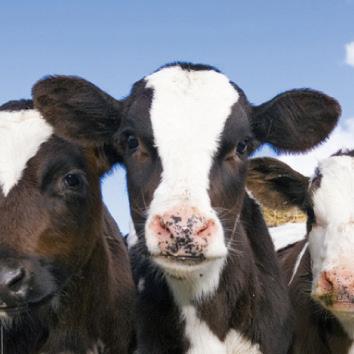
7. Hold regular team meetings - 5-minute stand-up meetings are most useful at this time of year so that everyone gets the same message and any minor frustrations can be dealt with. Use a simple agenda of ‘what happened yesterday’ and ‘what’s happening today’.
8. Work as a team and lead by example

3. Discuss and plan any upskilling your team members will need - this includes introducing new staff to your systems and processes.
4. Ensure all the appropriate PPE and tools are available for your team - this includes having the right footwear for the
9. Watch for signs of stress and fatiguethis includes in yourself and in your staff. If you do notice any stress or fatigue, be proactive in dealing with it.
10. Keep timesheets for all employees - it is good practice, and you can reflect on them later to plan for next season.
11. Keep talking, coaching, and providing feedback – celebrate success!

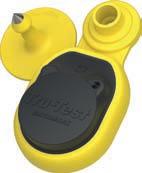






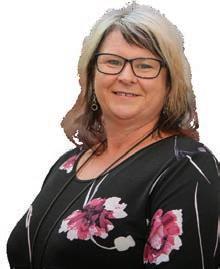


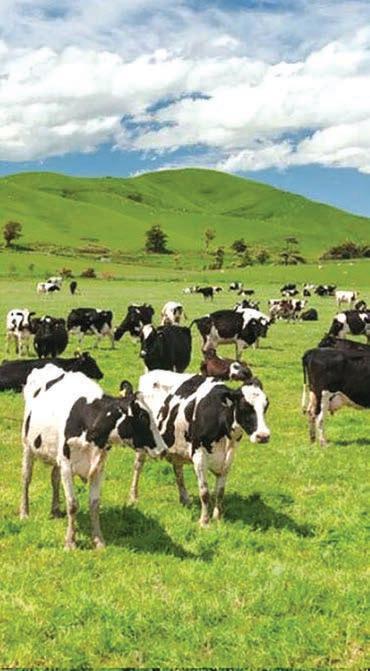
A group of young, vibrant ladies from Tasman Rural Women successfully distributed $12,000 between three intermediate schools and several surrounding area schools, helping young girls to be able to compete in various sports. The women set themselves on an ambitious mission of raising money to support Nelson and Tasman’s families struggling to afford school sports fees and equipment and their project helped around 185 families/whānau.
Liza Vass, Anna Thomas, and Emma Higgins, members of Tasman Rural Women New Zealand, who launched ‘Play for Keeps’ in 2023, recently were able to distribute much-needed funds to Nelson Tasman intermediates and primary schools.
The majority of the funds specifically to help girls in participating in sports by reducing or removing the cost of fees and equipment which are barriers for some young females getting involved in sports. Emma says initially the group contacted intermediates and area schools, asking a range of questions so they could better understand the need within each school. From that they got busy creating the Play for Keeps mission.
Murchison Area School is using the funding for participation, fees, equipment, and costs associ-



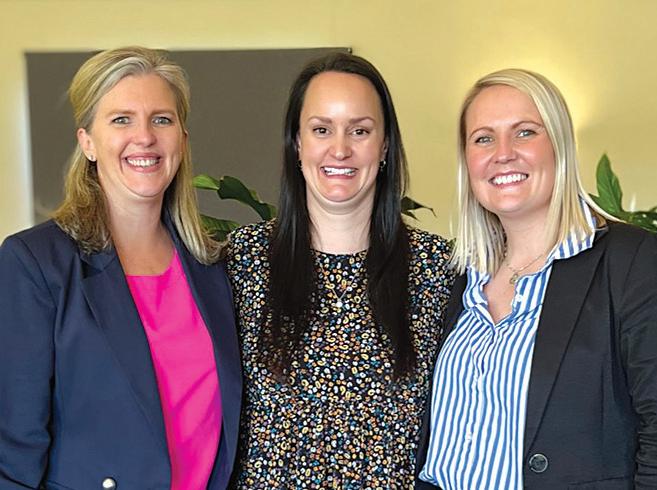
distributed
between three intermediate schools and several surrounding area schools benefitting around 185 families/whānau.
Supplied.
ated with the TOSI (Top of South Island Area Schools) Tournaments.
Maruia Area School used the funds to update its sports equipment, meaning teachers are now able to provide a wider variety of sports lessons, exposing students to more games, skills, techniques, and experiences.
Nelson Intermediate is putting the funding towards encouraging and supporting girls to participate in sports, specifically basketball, football, cricket, and rugby where female numbers are low, by reducing the cost of sporting equipment which is often a barrier.
Broadgreen Intermediate used the funding to cover female sports fees and Collingwood Area School, Tapawera Area School, and Waimea Intermediate are using the funds on a discretionary basis, using it for a combination of
equipment and sports fees for girls to participate in sports.
“Our successfully completed mission has highlighted the work that the Rural Women organisation does,” says Tasman Rural Women member Emma Higgins.
“We often ask our members and the wider rural community about issues or concerns affecting people in the rural areas they live in, and our Play for Keeps mission has put Nelson and Tasman’s families at the forefront of what we have been working on as a group.”
“It’s been so rewarding for all involved. This opportunity was made possible by all the generous women involved and through funding from Manatū Wāhine Ministry for Women as part of celebrating the FIFA Women’s World Cup 2023,” Emma adds.
P&M Fireplaces is Nelson's only retailer who specialises in a wide range of premier wood fires, cookers, gas, electric and multi-fuel fires. First established in 1956, and purchased by owners Murray and Bev Sinclair in 2005, they are the friendly team that have been keeping locals warm for nearly 70 years. Currently boasting a massive ‘Metrofires Hot Winter Sale’, along with Woodsman and Masport specials, their showroom holds a huge range of products from various leading suppliers.
Murray and his team can help to find the right fire for any home, provide expert advice, handle the council consents, installation, and assist with ongoing servicing. Brands are Woodsman, Metro, Masport, Firenzo, Milan, Tropicair, Nectre, Esse, Yunca, Wagener, Warmington, Hunter, Pyroclassic, Kent, Stovax, Bionic and many more available, with all parts for all models, even discontinued lines.”
For expert advice and know-how talk to the home heating specialists, visit the one stop shop for your heating needs: P&M Fireplaces at 128 Tahunanui Drive or call 548 5742.

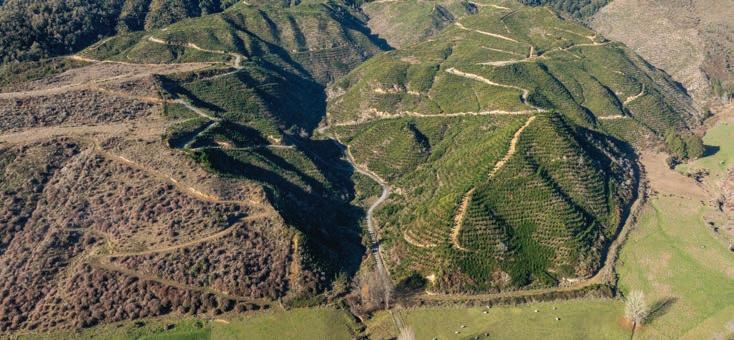
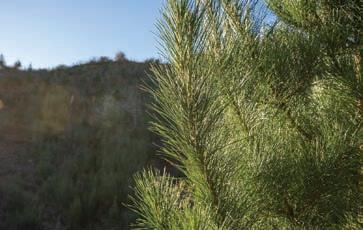
0
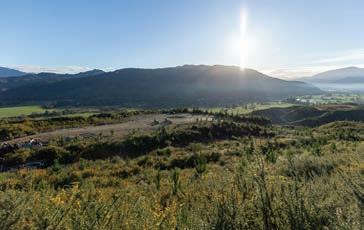
forest
Road, Murchison
up!
Carbon Forest Investment Opportunity with Added Recreational Benefits! Situated approximately 4km south of Murchison, discover an exceptional investment opportunity with additional recreational advantages!
Key Features: Of the 92 Ha total Approx. 69 HA of 2nd rotation Pinus Radiata planted in 2021. 30.8 hectares registered in P89 Stock Exchange ETS. 38 hectares registered in P89 Averaging ETS. Fully developed tracks and skid sites. Solid income potential from Carbon credits and future timber harvest. This fantastic property overlooks the Matakitaki River, Kahurangi National Park, and surrounding ranges, offering excellent hunting, walking, and recreational opportunities. Consider building a bach, hunting hut, or permanent residence, and enjoy the amenities of the nearby rural town of Murchison.

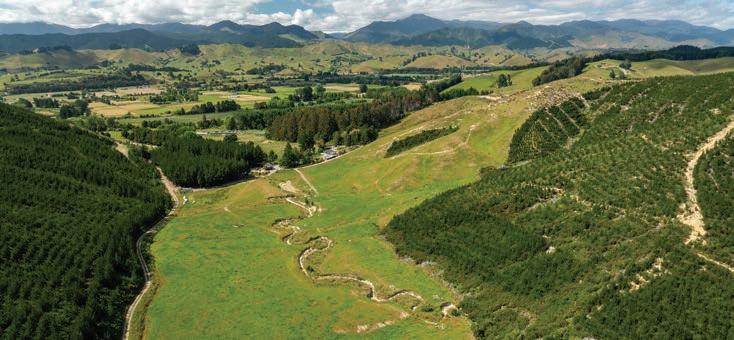
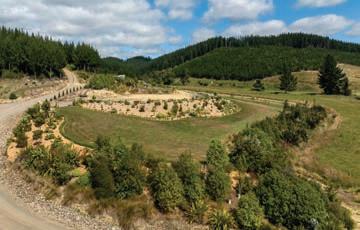
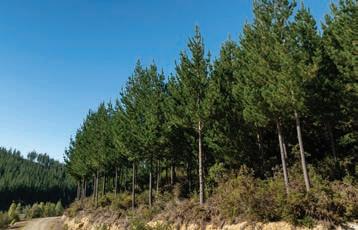
Prime land : forestry, grazing & sensational building sites
242 Teapot Valley Road, Brightwater
Rarely do opportunities like this arise—yet remarkably, we have two separate blocks for sale in this fantastic and convenient location. If you’re seeking privacy, space, passive income, grazing land, and a blank canvas to build your ultimate forever home, both of these blocks will undoubtedly meet your criteria.
Lot 5 spans approximately 155 HA, with mixed age Pinus radiata covering 119.5 Ha, around 10 Ha of quality grazing land, and a sizable established building site. The property features a 5-bay shed with solar system and water from a well on-site.
Lot 4 spans approximately 50 Ha, with mixed age Pinus radiata covering 33.7 Ha, and around 12 Ha of quality grazing land including cattle yards. An elevated sunny building site offers expansive views. Both blocks are well-tracked throughout, ideal for horse riding, mountain biking, walking, or hunting. Situated in Teapot Valley, enjoy rural seclusion within reach of Brightwater and Richmond amenities. Act quickly to secure your private inspection before these unique opportunities are gone.

Toby Randall M 027 233 9170
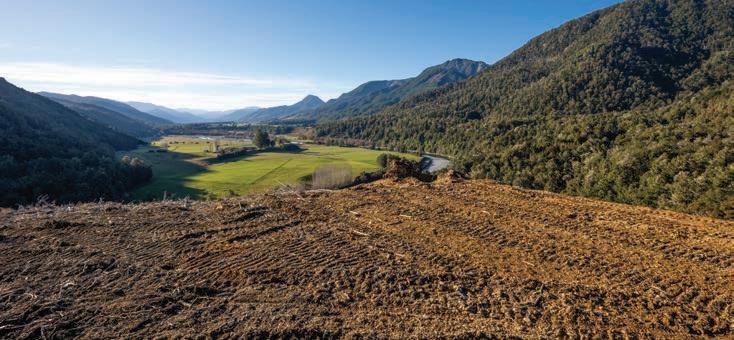
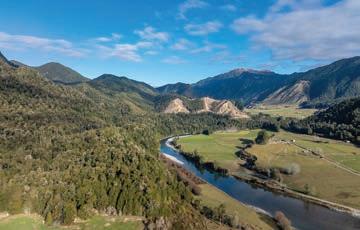
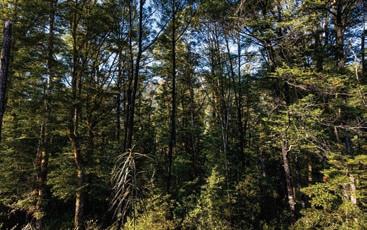
Discover your slice of paradise: recreation at your doorstep 1135 Matakitaki Road, Murchison
Just up the Matakitaki Valley from Murchison lies a secluded 100-hectare block, ideal for a getaway or permanent residence. The elevated sunny spot offers stunning views of the river, bush ranges, and farmland. With approximately 14 hectares already harvested and ground prepped for replanting, the vendors are all set to replant this in Pinus Radiata. But if that’s not your preference and you’d rather see a different species or more natives perhaps, be quick and you might not be too late to change the plan. Recently harvested, the block features new tracks for easy access, perfect for hunting deer and pigs or recreational activities like walking, biking, and horse riding. Borders with DoC land expand the exploration options to mature bush, the Matakitaki River, trout fishing, and white water sports. This property promises both solitude and adventure in a rural paradise, making it a prime opportunity for those seeking a slice of tranquil yet dynamic country living near Murchison.
+ GST ( if any)

Toby Randall M 027
toby.randall@harcourts.co.nz


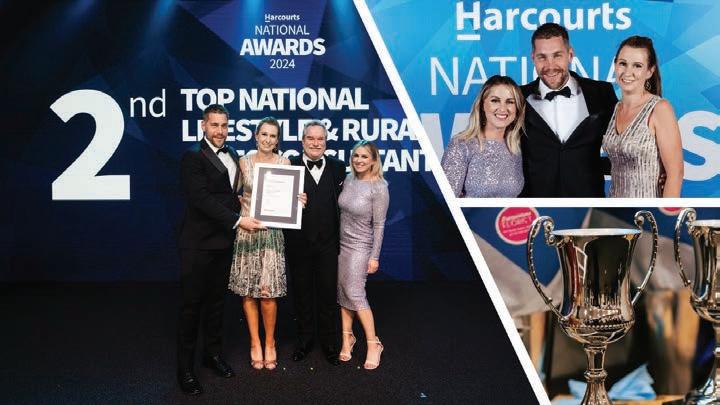
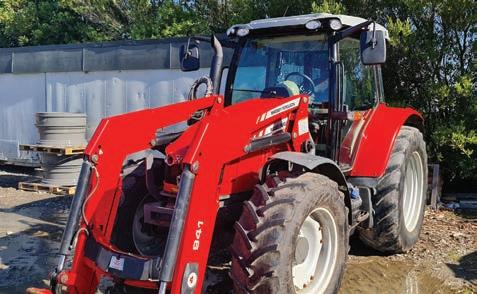
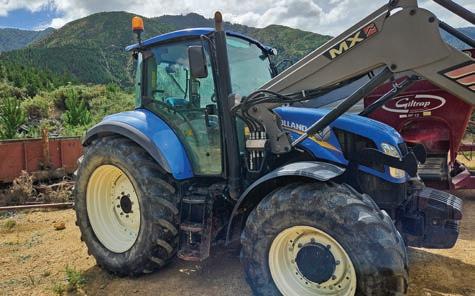


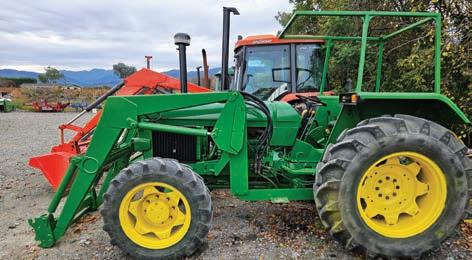
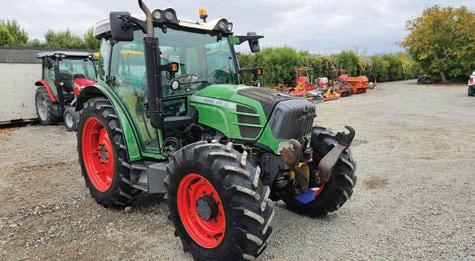
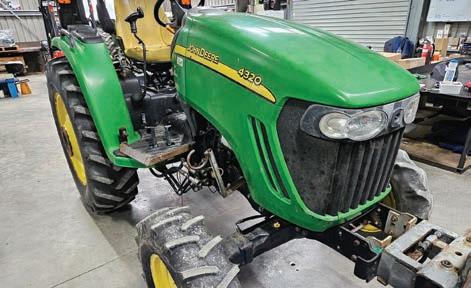

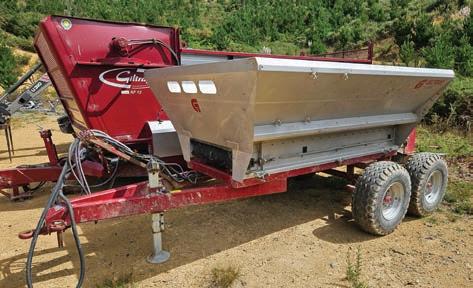
• Iseki 6500 and loader - $12,500
• Giltrap RF13 Side delivery feed out wagon, near new condition, under half new price - $34,500
• Massey Ferguson 245 power steering good rubber. Tidy order. New seat and serviced - $10,500
• Vicon PZ 360 haybob late model in very good order - $4,750
• Small 1.5 slasher - $1,600
• Heavy duty 7ft back blade hy rams to angle and tilt - $6,500
• Austin 3m HD cambridge roller excellent condition - $4,950
• 9ft cambridge roller, very good order - $2,800
• Vineyard Sweepers - 3 available
• Hustler front fork lift suit 135 MF$2,000
• Trimax 1.8 Vineyard Mower, tidy order - $3,000
• Dual wheels Snap/locks 38” 36” 34” 30” from - $2,200
• Fieldmaster 275 topping mower, all serviced, good condition$4,950
• Silvan 600l herbicide sprayer electric controls - $5,000
• Kvernland TLA 6 metre cultivator crumbler - $8,500
• Mole plough good order - $1,250
• Rata pallet fork euro hitch - $1,250
• Yeoman chisle plough 9 tyne$2,200
• 2m cultivator - 2 to choose from
• Used cambridge roller rings
• Berti 1.6 mulcher very good order - $6,750
• Berti 1.6 picker mulcher - $5,500
• Ero Roller plucker on power pack all serviced good order - $12,000
• Howard AR 80” rotary hoecoming in
• 2000l trailing overow herbicde sprayer hy fold, fully serviced complete with autorate controller - $6,500
• 3 metre leveling bar 3pl - $2,200
• Vicon 302 spreader like new$2,400
• Brevigleri 1 8 mulcher runs up well - $3,500
• 2m Rapier gear drive mower all serviced and ready to go - $6,500
• Fieldmaster gear mower, 1.8 mtrs wide - $6,750
• New 175 slasher, Vineyard mower - $6,000
• Nuibo extendable vineyard mower 1.2mtrs-1.75mtrs - $8,750
• “Croplands” 2000l trailing overow herbicide sprayer hy fold, fully serviced complete with autorate controller - $6,500

The New Zealand Arboricultural Association (NZ Arb) is delighted to announce The Walking Tree as the winner of the 2024 Tree of the Year New Zealand award. This extraordinary northern rātā (Metrosideros robusta), located near the Karamea Cemetery, captivated the hearts and imaginations of New Zealanders with its unique appearance and fascinating life story.
The Walking Tree was nominated by Bryan Bell, who highlighted its remarkable form and captivating presence. With its twin trunks stretched as if in mid-stride – and seemingly wearing high heels – this tree is a striking natural wonder. Its resemblance to one of Tolkien’s sentient, tree-like Ents has earned it the affectionate nickname, The Walking Tree. The tree was the clear favourite in the competition, running off with over 42% of total votes.
The northern rātā is one of New Zealand’s tallest flowering trees. Surprisingly, it begins life as an epiphyte growing high in the forest canopy upon another host tree. Over time, its roots reach the ground, and it eventually envelops the original host. Northern rātā can live for up to 1,000 years,
and it remains a mystery just how long this windswept walker has been strutting its stuff north of Karamea.
The 2024 Tree of the Year campaign, run by NZ Arb, is proudly sponsored by Delta and supported by the NZ Notable Trees Trust and the New Zealand Tree Register. This annual event celebrates the incredible trees that are an integral part of New Zealand’s natural heritage and part of our communities.
Richie Hill, president of NZ Arb, stated, “ The Walking Tree is a prime example of the remarkable trees that we, as New Zealanders, are fortunate to experience. This award recognises the significant role that trees play within our communities, not only enhancing our local environments but also providing a sense of place for past, present, and future generations. The Walking Tree is an exceptional feature and a must-see destination, highlighting the uniqueness and diversity that exists within New Zealand’s notable tree population.”
A huge thanks to all those who voted and supported the Tree of the Year New Zealand 2024
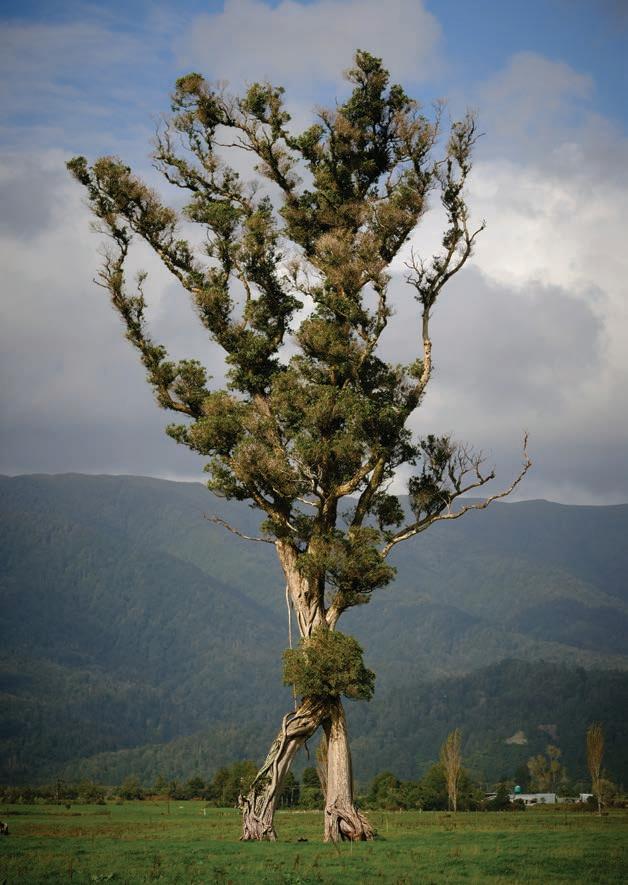
CELINE WALTERS
DairyNZ’s CalvingSmart event in Totara Flat focused on helping set up for a successful calving season, as that time of year approaches again.
Dan O’Keefe, DairyNZ Area Manager, said that the event brought together a room full of staff who are in their first few seasons and provided an engaging and interactive session.
“We are focused on ensuring that everyone is across the key animal welfare components, and what to expect during calving, while having a strong focus on personal wellbeing,” says Dan.
“Calving is busy and tiring, so we want to make sure that everyone is looking out for themselves, their teams and their animals, to have the most successful calving season possible, which then helps set calves up for the best season ahead.”
Interactive components of the workshop included a demonstration model cow which allowed the farmers to experience how a calf lies, and then how the calf needs to move through the birth canal.
“A set of cards are also used to show the different stages of cow labour and calving, and what the signs are, which creates some good discussion on what to do at the different stages,” says Dan.
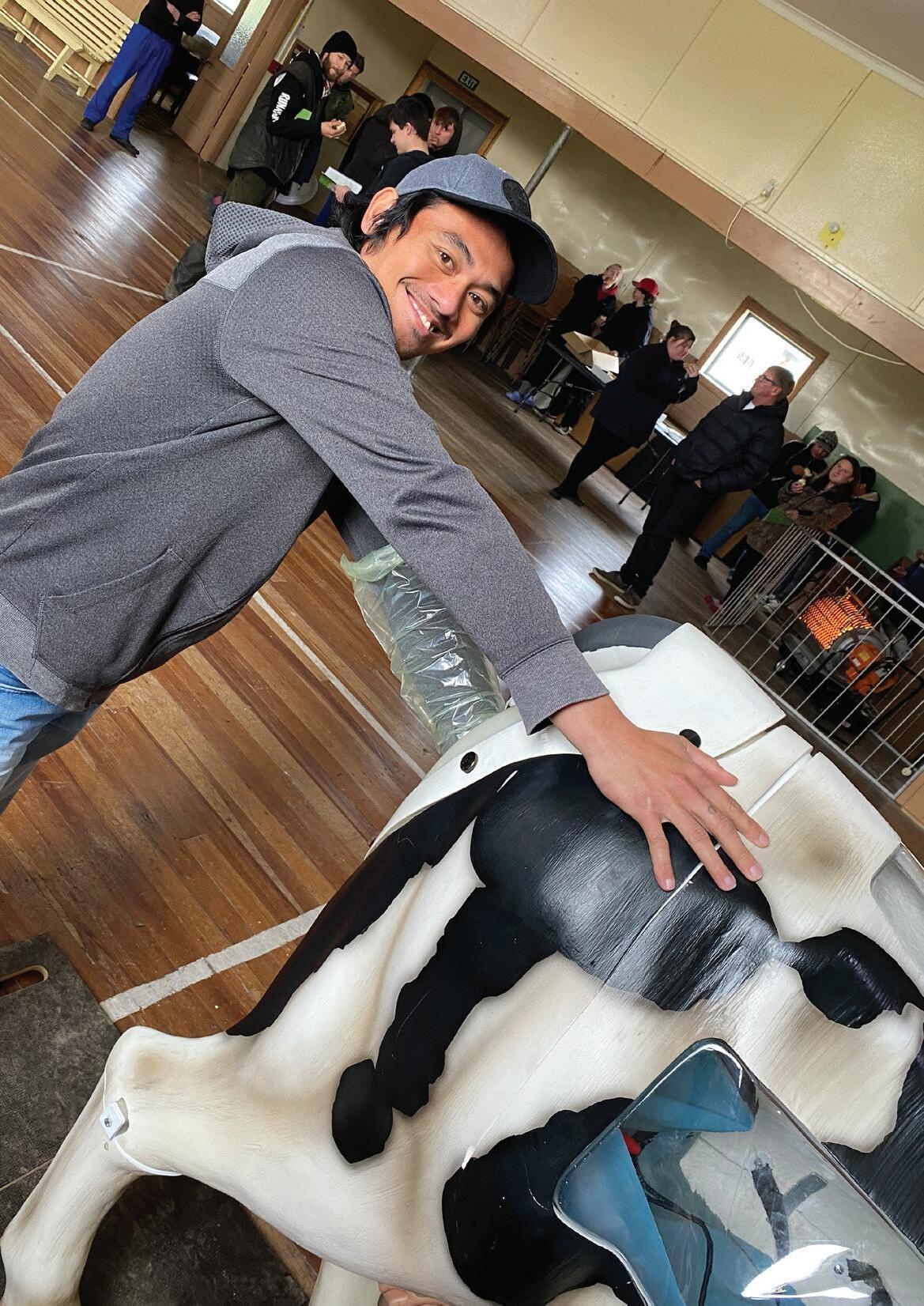
“I enjoy these events because I see the enthusiasm of the attendees to learn about how to care for their cows, calves, and team members.
“We are also thankful for support from Rural Support Trust, who provided lunch for all attendees, while they have also generously provided over 600 meals across our other events in the 2023/24 season.”
More information on calving online at dairynz.co.nz/calving

• High grade West Coast bituminous low ash coal
• Premium grades available for your boiler or multi fuel burner
• Bagged coal from 20kg to 1 tonne
•
• Bulk deliveries
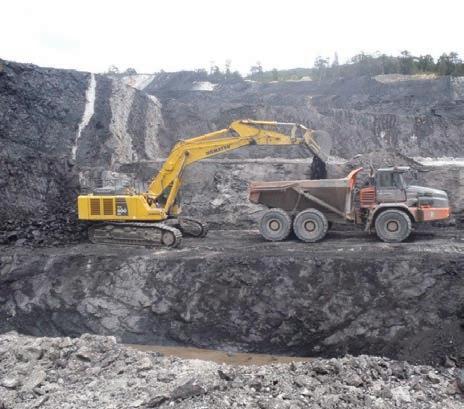

ANDREW RITCHIE
The ETS (Emission Trading Scheme) was recently described as the single biggest opportunity for landowners at a recent seminar held in Havelock. The event was well attended by landowners. It was hosted by Beef and Lamb NZ with representatives from NZ Forest Services and Phil Orme a forestry and land use consultant. Phil suggested it was the only way to receive payment for something that does not leave the farm. The scheme was instigated when New Zealand signed up to be carbon zero by 2050 in response to concerns over climate change due to temperature rise. Belinda Miller the Regional Manager for the Forestry Advisory Service in the Central Region said the aim of the day was clarify some of the rules, regulations and benefits of carbon setting.

Phil Orme stressed that it was an opportunity to do the right thing by the land with an ongoing income stream that had never before existed, but it came with rules and regulations, which if not understood can make life interesting and may have some serious consequences. “Trees have wider benefits other than providing access to the carbon markets, such as shelter and shade, soil retention on slopes, landscape diversity, wildlife habitat and diversification of income,” he said. Having committed an area to the ETS the land must remain in the scheme for life. Should the landowner wish to leave the scheme they must give back units received at the current market price. Payment of units covers the first rotation for a period of 16 years. In order to retain the units, the land must be replanted within a period of four years fol-
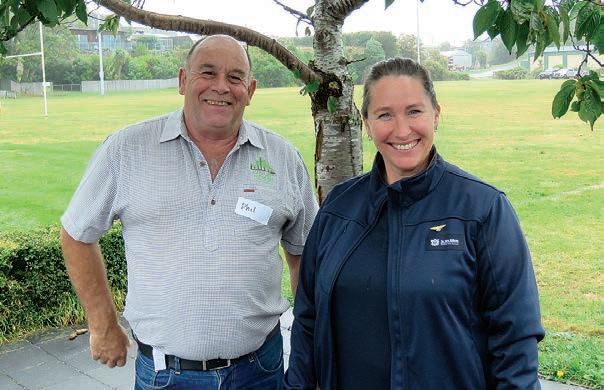
lowing harvest. To be eligible to meet conditions trees must meet the post 1989 forest land definition. Trees must have the ability to reach 5 metres in height and the area must be a minimum of 1 hectare, a 30% potential canopy cover is essential.

We can deliver or collect just about anything, including building supplies, gravel, fertilizer & stock. We also look after swing moorings.
Servicing the entire Marlborough Sounds for over 100 years South End of the marina, Havelock • P: 03 574 2434 • E: info@jbs.nz www.jbs.nz
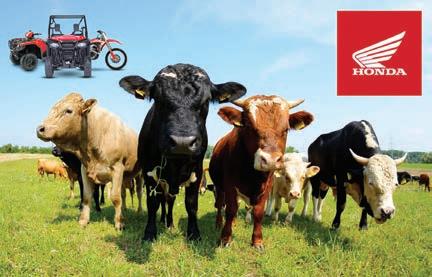
Don’t miss out!

There are many options of species or combinations of species available from natives, eucalypts, redwoods, oaks and Pinus radiata to name just a few. Phil’s advice is to plant something you like looking at and is suitable for the environment of the farm. “Contrary to
what accountants say pines can live for more than 30 years some plantations he has seen are 160 years old,” he adds. Forsoil retention poplar poles can be planted to a maximum of 20m apart and can be utilised to tie blocks of less than 1 ha together to enable them to qualify for the ETS scheme. Pre 1990 forest regulations could trip up landowners. If pre 1990 forest land is deforested the current landowner has an obligation to surrender a certain number of carbon units to the government. Under certain conditions compensation may be available for loss of valuation of the property due to the regulations. Funding schemes for planting may also be available regionally. The regulations are complex, which is all the more reason to contact Belinda Miller of the NZ Forest Service Belinda.Miller@mpi.govy.nz Their advice and expertise is free.
Merino market like the “Curate’s Egg”
TONY
The saying “curate’s egg” is something described as partly bad and partly good and that was the assessment at the well-attended AGM of Marlborough Merino Association’s AGM held recently.
Retiring chairman Ron Small in an annual report said the past year had contained all the vagaries of farming, poor commodity prices, drought and inflating costs.

“Yet there was a bright side that merino farming is holding up better than most other livestock enterprises. Long term wool contracts have proved a boon for those that have them, he said. Blair Davies of Merino NZ gave a report on the market which over the past two years has a very low percentile. The overhang of Covid continues to plague the supply chain with stocks at all levels from greasy wool right
through to retail and is unlikely to improve in the coming season for most wool types, he said. Points for the coming year were Pip McConway will be running in shed wool handler training days again this season, Tom O’Sullivan was this year’s recipient of the Tasmanian exchange programme and the association will be sponsoring Merlot Tupara to attend the VF corps cadetship programme run by Merino NZ.
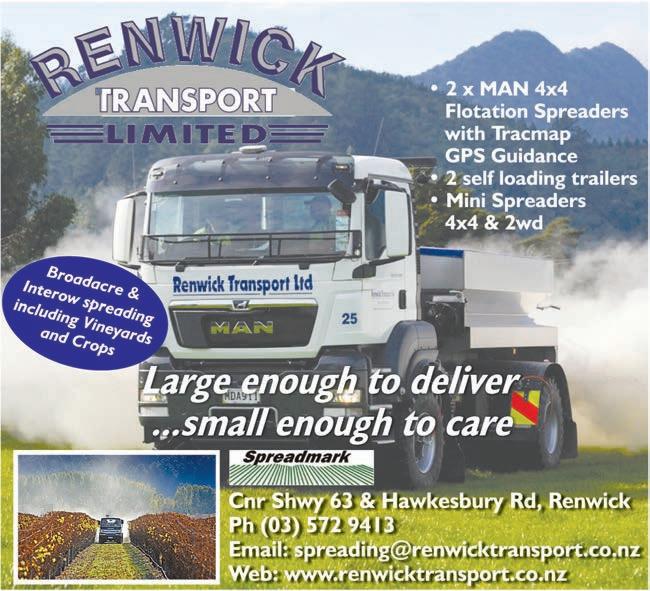

ELOISE MARTYN
For decades, farmers and growers have grappled with the age-old arduous task of preparing their fields for planting by removing rocks that litter the landscape in Waimea’s old riverbed paddocks. Traditional rock removal methods involve back-breaking labour, consuming time and resources.
However, Ross Stratford saw an opportunity to change that and recently purchased an impressive agricultural rock picker.
“Waimea and Ranzau’s rocky soils are farmed because they are rocky - not in spite of that,” he says.
“The rocks create free draining soil and the plants have a winter hot water bottle as the rocks retain and release heat. Stones are the reason we grow vegies in Tasman, however bigger rocks place wear and tear on ground engag-
ing cultivation,” Ross, who has been a contractor in Tasman for over 40 years, explains.
A distinct advantage of fewer rocks in the soil minimises the chance of damage to machinery.
“Rocks can cause huge costs each year by causing damage to machinery, repairs are costly,” Ross says.
Ross’s rock picker (which took three months to arrive from Finland where large amounts of rocks and stones of all sizes were deposited during the Ice Age) represents a significant leap forward in agricultural technology.
The ELHO Scorpio 550 is fully hydraulic driven (removing the fret of breaking shear bolts), weighing almost 7 tonnes empty and with a large hopper capacity of holding up to 2 cubic meters.
The rock picker utilises two hydraulic circuits (one at 110 bar and the second at 150 bar). The
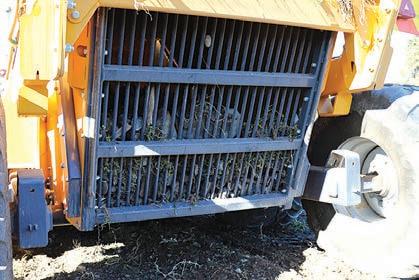
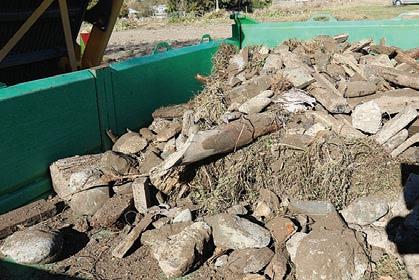
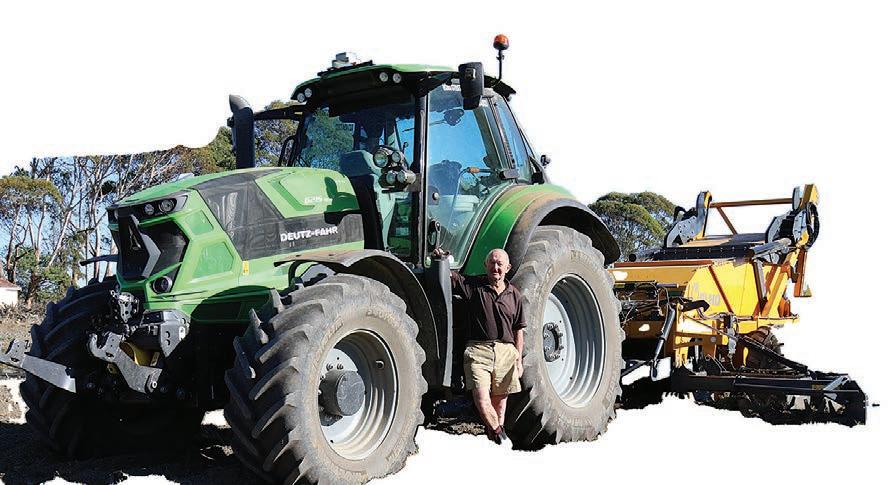
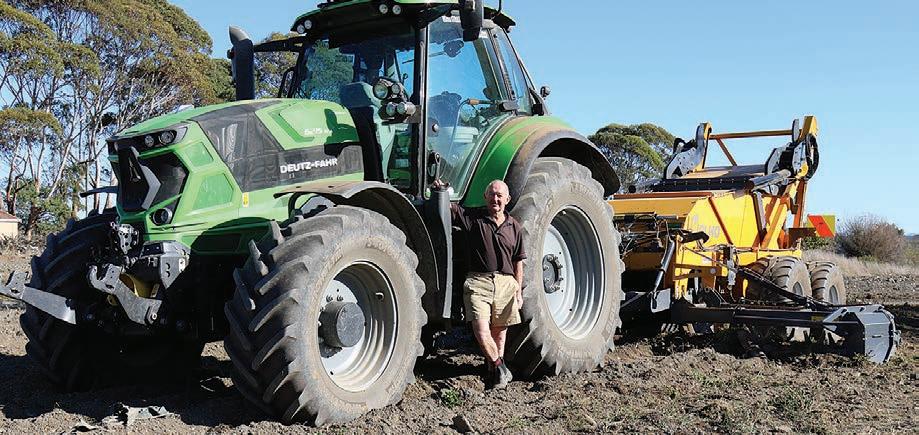
hydraulics are automatically lifted if the picker hits something too big or jams up, however the hydraulic reverser function helps in a jam.
“The machine goes along and the arms scoops up the rocks out from the soil and then flicks them out the back into the hopper. When full, the hopper load is dumped onto a trailer. When not

The hopper extends to allow easy transfer of collected rocks from the hopper to the trailer to be carted away.
The collected rocks, as well as wood and rubbish, are now on the trailer and ready to be taken off the property.

in use the hydraulic arms move up into the air and off the ground for transport,” Ross explains.
“With my one, there are now four ELHO rock pickers in the South Island.”
The machine can’t identify rock from other materials such as wood, tyres, or debris which is an advantage to the paddock owner as the rock picker scoops up
the lot. But it’s a disadvantage to Ross who hasn’t been able to find a purpose for the collected rocks.
“Not getting clean rock has made it tricky. I’d like to find someone who can utilise the rock and repurpose it,” Ross adds.
Since getting the rock picker Ross has been busy clearing paddocks and addressing a longstanding challenge.


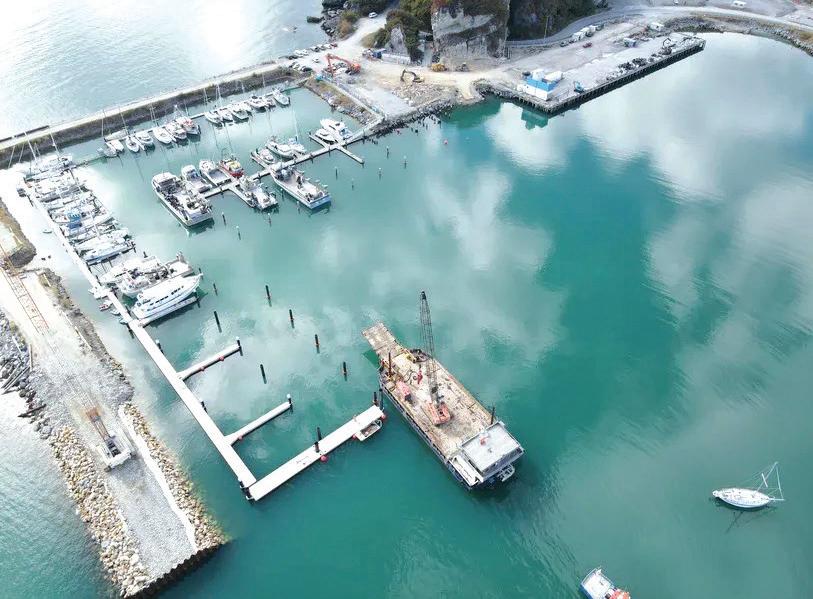
Work on the upgrade of Golden Bay’s Port Tarakohe is progressing.
The more than $12 million dollar project has been made possible through a $6 million loan from Kanoa, the provincial development investment group within the Ministry of Business, Innovation and Employment, which is on top of the $6.7 million TDC has identified to invest in the 2024/2025 year.
A new fuel bowser has been moved to a new site at the end of the floating wharf making it easier and more convenient for vessels to refuel.
The new large berths are getting their
finishing touches and the inner breakwater to offer increased wave protection has been completed. Work on a new sheet pile wharf on the northeastern arm is underway and design work for new offices and an ablution block is being done.
Meanwhile, the long-term vision for the port is being developed with iwi, key stakeholders, recreational users, and the community to produce the Port Tarakohe Structure Plan. Drafting of the plan is being done ahead of community engagement before the year’s end. Visit www.shape.tasman.govt.nz/ port-tarakohe-structure-plan for more information on the Structure Plan.
Sue Brown
President,
Federated Farmers Golden Bay
The June meeting of the Golden Bay branch of Federated Farmers began with the election of Mark Tubman to the position of Share & Contract Milking chair. Mark, with wife Esther, contract milk at Puramahoi and it is wonderful to have this role filled again.
The main discussion was around stock transport, with me reporting that it had been raised on the earlier Federated Farmers National Presidents’ call.
In some areas, a general shortage of experienced stock truck drivers combined with the use of electronic logbooks, is creating problems when a journey takes longer than usual.
An example given was being stopped due to roadworks and the logbook keeps ticking over, which can flick drivers over their hours. This often has a
flow on effect for the next load.
A query from our meeting was raised as to the possibility of asking the national Federated Farmers body to lobby for an exemption for such non-driving times.
The meeting agreed that we could support asking for some practical wriggle room, while maintaining driver safety as the priority.
Noted was the importance of farmers and transporters working together on such issues, as locally in Golden Bay transporting stock usually involves some distance. Whether it’s buying in or selling store stock or it’s sheep and cattle heading to the meat works, being transported well, matters. Replacement dairy stock often take their first truck trip as a weaned calf heading off the milking platform to a grazing block, and a good first transport experience trains them for loading on the return trip
as in-calf heifers, with later trips as cows heading to and from winter grazing. All agreed that good preparation of stock, communication and patience is key to getting the stock on board and the truck away in good time. In general, the transport companies let the farmer know their estimated arrival time for pick up, so that they can be on hand to help. While the farmer’s help may not be required to load the stock, being available, if necessary, can help too…we’ve all got that story about the one who jumped the yard fence! The transport company can then go on to contact the person at the other end of the journey so that they, too, are on hand to welcome these new arrivals.
I’m pleased to be leading the team here in Golden Bay. Federated Farmers has an important role to play throughout New Zealand and Golden Bay needs to be represented.

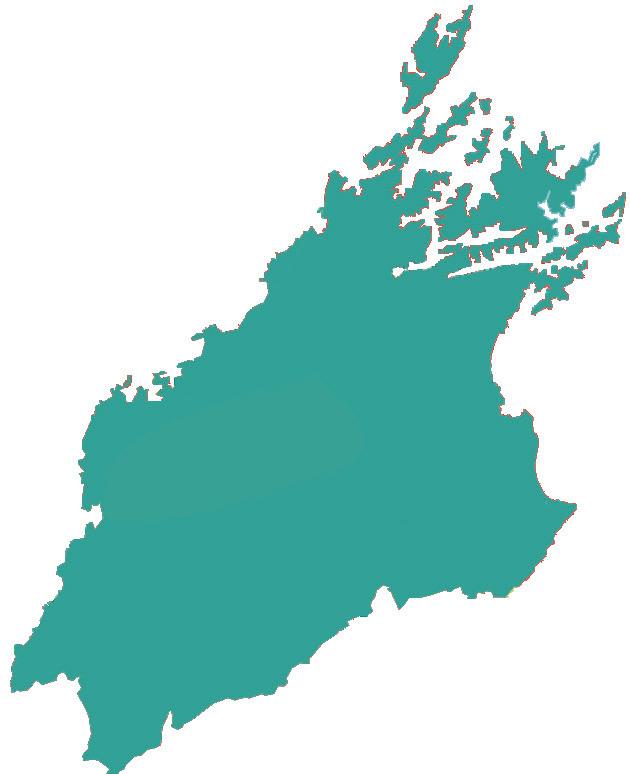
• Collingwood On the Spot
• Takaka Fresh Choice
• Mrs Smiths Cafe Riwaka
• Four Square Mapua
• Guardian office, 15 Wallace St, Motueka

• Wakefield Four Square
• Brightwater Four Square
• Mapua Four Square
• Hodgson’s General Store, Murchison
• Bayleys Queen St, Richmond
Atawhai Four Square • Bayleys Real Estate, Trafalgar St

• Havelock Four Square
• Mariner’s Mall Picton
• Seddon Supermarket
• Renwick Fresh Choice
• Flaxbourne Cafe • Rai Valley Cafe

Each year at the Fieldays in Mystery Creek, Waikato, exhibitors’ sites are judged and a few awards are given to worthy recipients. At the 2024 Fieldays held 12-15th June, the ‘Commitment to Sustainability Award’ went to supply co-operative Ravensdown. Field day judges praised Ravensdown for its well-designed food and waste management in its shareholder’s hospitality area. “It is possible to mi-

nimise waste if you invest time in planning an event,” said Alisha Black from environmental organisation
Instep. “The Ravensdown team ‘reduce’ waste by using real crockery, ‘reuse’ with cups made from sustainable
products that can be taken away and reused by the visitor, or cleaned onsite, and ‘recycle’ by completely separating waste. In addition, their team could tell their sustainable story and the technology and initiatives described throughout their site were communicated with excitement.” Ravensdown commented that they were ‘stoked’ with the award and that the team had put in lots of hard work to ensure every aspect of the site was carefully considered.
JOHN BARNES FertNZ Managing Director
Healthy stock is what we all strive for, it is after all what is required to provide us with an income that will sustain our farming sector. This is what we call animal husbandry. Animal husbandry is about the caring for your stock. The reason we are farmers is for production, so it stands to reason that if one
really fit animal can provide more. Our farm will be more profitable.
So how would this work in reality. All of our animal’s graze pasture. This means the pasture must have the elements which is required for the stock to perform on. Dr W.R. Wooldridge puts it this way. “Grazing is the meeting of the animal and grass. This meeting may be happy or unhappy; it may even be
tragic, as in the case of grass tetany, a disease characterized by convulsions which attack mainly [but not exclusively] grazing female ruminants[cows, ewes, goats, etc.] it can occur at any time of the year but is particularly frequent in spring.”
The cause of grass tetany is the imbalance of elements within the pasture being grazed. In this case it will be the Potassium being too high and the Magnesium being too low. It is all about the ratios in the pasture.

The reason for the pasture be-
ing out of balance is that the soils have been feed a mixture of fertiliser which has lifted the available levels of one element too high at the expense of another. In this case too much potash and not enough magnesium. To recap, the ratio of available fertilizer elements in the soil will determine the uptake of elements in the leaf of the pasture which the animal will eat, and this will determine how well the animal will perform.
“It is that simple.” Call our team 0800 337 869 or visit our website www.fertnz. co.nz for a tailored fertiliser plan.


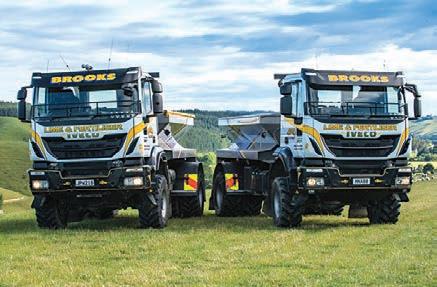



KEN STRUGNELL
I’d not driven or reviewed a Mitsubishi for more than two years when “an invitation to Drive” the new Triton popped into my inbox.
Although Mitsubishi Motors NZ had their entire Triton press vehicle committed to North Island Press and the Fieldays in midJune I do expect to be writing on one before years end. However, as I was in the North Island for another function, they kindly lent me the mid-spec Outlander for a few days for a rural East Coast meander.
There are 10 models in the range 5 2WD and 5 oddly and erroneously named both 4WD and AWD? Shunning the PHEV Hybrid model, I asked for the petrol powered most popular version, the XLS at $49,995. The problem with Plug In’s I have found is when time is critical,

there is seldom a charge point where you need it, or at private homes. Such was my sojourn, so
I was keen to drive the latest Outlander without that challenge. Like the Hybrid Suzuki S-Cross
last month’s review, I may again come to question my decision, as the Hybrid from Suzuki

taught me. To start, I was extremely pleased to finally see embedded navigation on the now nine-inch infotainment centre console. I hope to see that too on the Triton. Why? Well, read on to see my journey. It’s so nice NOT to have to connect your phone to a cable and then a USB A port just to use Google Maps. It turned out to be super easy to use and really upto-date.
Starting in Wellington, I first drove the amazing Transmission Gully both ways, staying in Greytown. From there I drove to Martinborough and then the back roads to Havelock North passing through Gladstone, Pongaroa, Porangahau, Wanstead, reaching the Omakere Hall, where left heads to Waipawa and right to Pourerere. The images here were taken at Pourerere beach. Nostalgic for me, as 60 years ago my mother’s long-time friends the


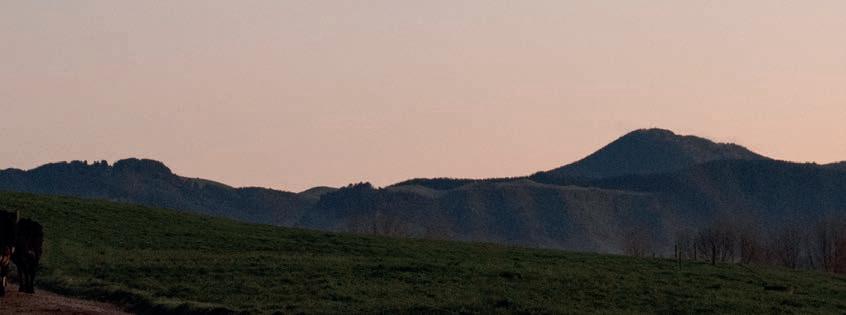





third generation Nation family on Punawaitai Station hosted our family for a week or two, upon our arrival in New Zealand from England. Many trips over many visits in their then new Land Rover to Pourerere beach a km or two away, were instantly remembered when I drove on to it for these photos, of those halcyon days three score years ago.
The back roads of Wairarapa and Hawke Bay, both sealed and shingle surfaces, were dispatched easily by the well-balanced and super quiet Outlander. Similar roads many readers will do daily, showed me why the AWD Mitsi is such a good choice in the rural sector. Good ground clearance at 186mm and a Terrain selector allows the Outlander to be set up for adverse driving conditions. On the beach leaving it in auto is fine except in the soft sand where Mud and Snow setting AND good momentum is needed. Fuel con-
sumption is measured every time you start the car and showed a ‘Best’ of 5.2 and highest use at 8.4 litres/100km. I rate that as very good for the roads poor condition in many cases destroyed by the numerous logging trucks. Yes, I saw the wonderful hills on my childhood now festooned with pine trees...How sad!
This though is a review on the Outlander, now in new sharper clothes. Gone are the rounded edges, eschewed for a distinctive and attractive design that matches form with function in this sevenseater SUV. It sits as well in the urban sector in 2WD as the AWD does in the country and with Mitsubishi’s 10-year diamond warranty is a safe pair of hands for the family. The XLS as an All-Road vehicle, makes economic sense, has all the current safety aids with ample internal space and storage and is a strong contender for the rural family wagon.
In a major step to cut emissions, Australia’s leading mining giants, BHP and Rio Tinto are poised to test battery-electric haul trucks in the Pilbara region of Western Australia. This initiative hailed as a “massive opportunity” by energy analysts, aligns with the companies’ ambitious net-zero goals and their commitment to reducing operational emissions.
The trials, conducted in collaboration with Caterpillar and Komatsu, aim to assess the performance and productivity of electric trucks. BHP President for Australia, Geraldine Slattery, emphasises the importance of technological breakthroughs and strategic partnerships in achieving op-
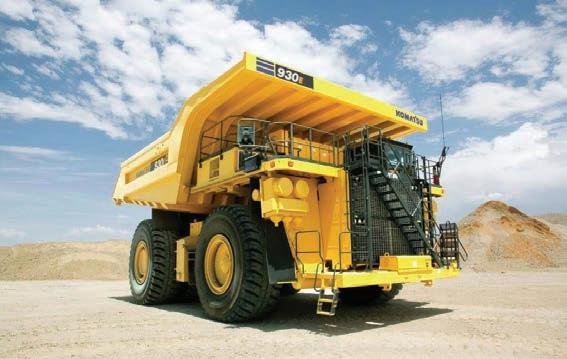
Major Australian mining companies BHP and Rio Tinto are poised to test battery-electric haul trucks. Photo: BHP.
erational decarbonisation. She highlights the need to develop a comprehensive operational ecosystem to replace diesel as a fuel source, encompassing mine planning, haulage network operations, and safety considerations. BHP has scheduled the trials to com-
mence in the second half of 2024 with two CAT 793 haul trucks and in 2026 with two Komatsu 930 haul trucks, which will provide valuable insights into the integration and viability of these new technologies within mining operations.


ELOISE MARTYN
Forestry minister Todd McClay announced Government would repeal legislation requiring the compulsory registration of log traders and forestry advisers before 1 July however, repealing legislation has provoked a range of reactions.
On one hand, removing the legislation, which the Government enforced in August 2020, could potentially foster a more open market and increase accessibility to the forestry sector, which might allow small players or individuals with expertise but lacking formal credentials to participate more freely.
On the other hand, it raises concerns about oversight and industry quality control. Without mandatory registration there might be less assurance of professionalism, competence, or adherence to ethical standards among forestry advisers. This could potentially lead to
issues such as misinformation, mismanagement of forests, or exploitation of resources. The decision has also sparked debates regarding the balance between regulation and deregulation, with some arguing for the necessity of oversight to protect both the environment and the interests of stakeholders within the forestry sector.
“The current system fails to deliver outcomes and places unnecessary costs on forest businesses,” minister Todd McClay says. “The repeal will be delivered at speed, with changes coming into effect before 1 July. However at time of print the legislation had not yet been repealed.
“The previous government legislated a compulsory registration scheme that has failed to deliver outcomes and makes ongoing regulation unwarranted. I am confident that voluntary registration through the New Zealand Institute of Forestry is a


within the forestry sector.
“The registration weeds out the people who are more likely to do a job and leave a mess, or financially exploit forest owners,”
Matt explains. “In the past year I have completed my advisor’s certificate and I found this was to be valuable to forest owners as it proves who is legitimate and who is not. After going through the whole process, it’s a shame to drop this and it should be considered to stay for everyone’s benefit.”
At the same time, the Government revealed intentions they would also make amendments to the Legal Harvest Assurance system.
better mechanism to support the quality of forestry advice.”
Tasman-based Matt Stuart, a registered specialist forest advisor and log buyer for Nelson Forest Managers with 32 years
of experience, is advocating for a reassessment of the decision to repeal the legislation. He believes that maintaining the legislation is crucial for ensuring standards and accountability
Timber products play a pivotal role in our primary exports, which contributed $5.8 billion to our economy last year. Overall, the implications of this repeal could vary widely depending on how it’s implemented, monitored, and regulated in the future.

PleasecheckyourproofcarefullyandapproveitorsubmitcorrectionsbytheFinalProofAlterationsdeadline. veorsubmitchangestoyouradwithinthe emailtoviewyourad,then

PFOLSEN&CO
FICA (Forestry Industry Contractors Association) and WIF (Women in Forestry) have signed an agreement to work closer together, share resources, and increase member value for forestry contractors. Women In Forestry (WIF) is a grassroots network of women working
in the New Zealand forestry industry, that focuses on supporting female business owners. Started informally in the 2010s, WIF has grown to offer more tailored, formalised support in recent years.
As part of the agreement, FICA will provide baseline funding to WIF to work on complementary projects for members, including a group payroll project, a work -

shop series focusing on topics such as employment law and accounting/costings, and shared networking opportunities for contractors to come together.
PleasecheckyourproofcarefullyandapproveitorsubmitcorrectionsbytheFinalProofAlterationsdeadline. cannow appro veorsubmitchangestoyouradwithinthe ATOLsystemat a timethatsuitsyou. Justfollowthelink proof emailtoviewyourad,then cl icktheAPPROVEorCORRECTIONSbuttonrightfromthere - nonewemailsrequired!
FICA CEO Rowan Struthers says WIF provides complimentary support to FICA’s offering, and more can be achieved by working together.
“WIF tends to focus on the back-office side of the business,
while FICA focuses more on the operational, health and safety and productivity areas. By working together, we can essentially add more value to members.” WIF General Manager Sarah Davis says WIF has already started working on some key projects and is excited to be working for the greater good of contractors. “Being an on-theground network, we believe we
have a good sense of what is really a concern for logging contractors. We’re excited to have input with FICA and potentially offer a useful perspective,” she says.
“We’re looking forward to building a stronger relationship with FICA and working together for the greater good in helping logging contractors in their businesses.”
TheProfessionalForest ManagementCompany ofChoice.
The Professional Forest Management Company of choice
TheProfessionalForest ManagementCompany ofChoice.
PFOlsenistheleadingproviderofindependent professionalforestryservicesinNewZealand.
PF Olsen is the leading provider of independent professional forestry services in New Zealand. Contact us now for all your forest management needs:
Contactusnowforallyourforestmanagementneeds:
PFOlsenistheleadingproviderofindependent professionalforestryservicesinNewZealand.
• Carbon accounting and advice
Contactusnowforallyourforestmanagementneeds:
•Harvestmanagementandlogmarketing
• Harvest management and log marketing
•Forestestablishmentandtending
•Harvestmanagementandlogmarketing
• Forest establishment and tending
•Forestvaluations
•Forestestablishmentandtending
•Forestvaluations
• Forest valuations
•Duediligenceonforestpurchases/sales
•Duediligenceonforestpurchases/sales
• Due diligence on forest purchases/sales
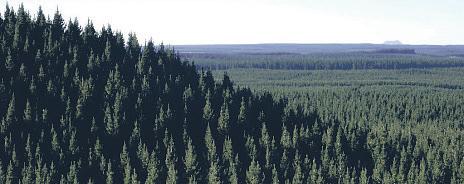

Nelson 035440066 Blenheim 035776675
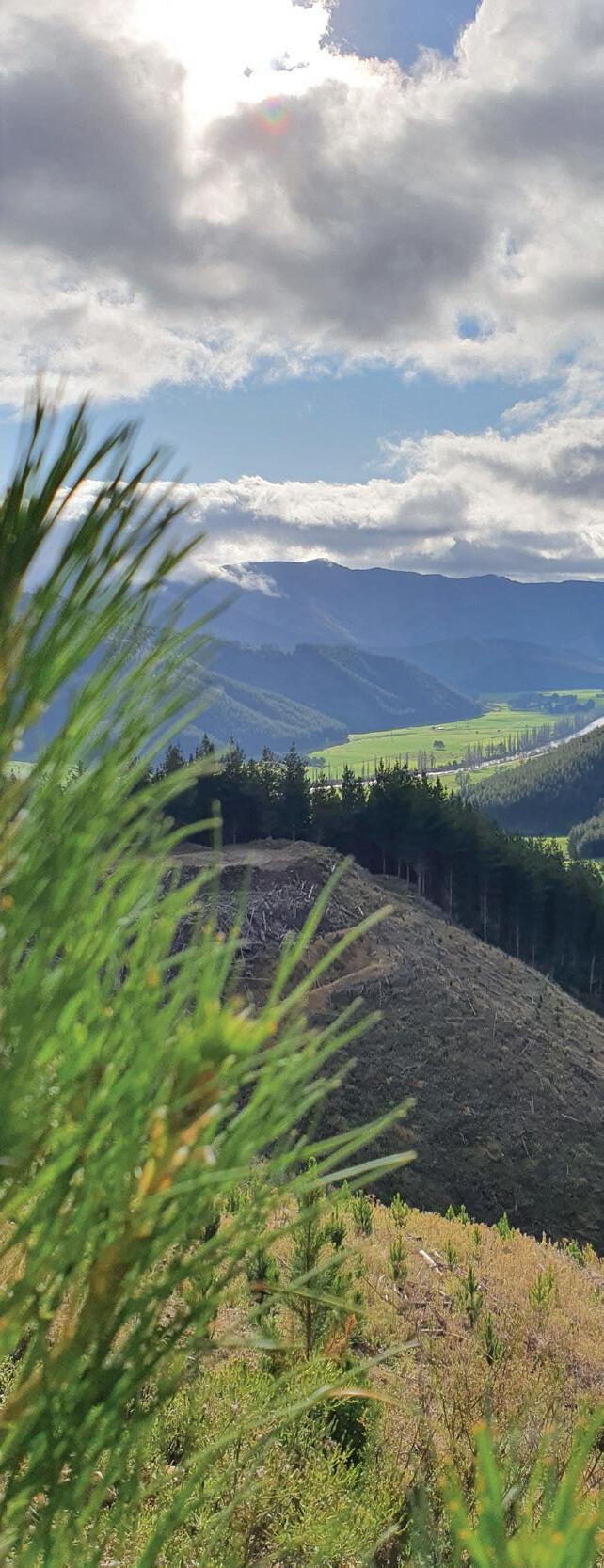

With 25 years experience in the industry the Tasman Forest Management (TFM) team offer services in:
• Forest and woodlot harvesting
• Domestic and Export Log Purchase
• Forest Establishment
• Emissions Trading Scheme advise and management
• Forest Valuation
• TFM are part of the Forest Management Group with offices throughout the South Island, Hawkes Bay and Southern North Island
Stuffmakeseveryefforttocreateadvertisementstomeetyourspecificneeds. Pleasenoteinsomeinstanceswemaybeunabletosupplyadditionalproofsduetocomplexityoftherequestordeadlineconstraints.
©ThisadvertisementhasbeencreatedasaserviceofStuff.Itcannotbereproducedwithoutpermission. Ifyouwishtousethismaterialelsewhere,pleasecontactyoursalessupportcoordinator.Chargeswillapply.




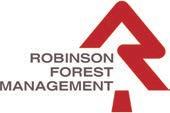


SARA HOLLYMAN
A first-of-its-kind forestry innovation has been celebrated at a Brightwater manufacturing site.
DC Equipment founder and owner, Dale Ewers, gathered with partners, supporters, customers, suppliers, and local dignitaries last month to celebrate the first two Madill 4000 Log Loaders off the line, manufactured from the ground up in Brightwater.
The event also doubled as a surprise reveal of a new prototype currently in development at the Brightwater site that will see a brand-new remote felling machine – a first of its kind for the industry.
The Madill RFM 1100 remote felling machine will completely remove the operator from a machine and will then be operated from the safety of the skid site above or below.
Dale says the equipment that they are producing locally is changing the industry worldwide, making
forestry a safer place to work.
Acquiring the Madill brand, alongside two other brands just 11 months ago, Dale says the innovation that continues to come out of the base in Brightwater is “industry changing”.
“With these innovations, it means you’re not in the machine, you’re away from harm. This has not been done anywhere else before in forestry,” he says.
In 2019, Statistics NZ released data showing that agriculture, forestry and fishing industry had the highest rate of work-related injury claims in 2018 and those working in the industry were almost twice as likely to be injured than the total rate of all industries.
In 2017 there were six Worksafe confirmed fatalities in the forestry industry.
As safety improves, the death rate for the industry has fallen, with Worksafe reporting one death in 2023 and one so far in 2024, both of which involved someone being
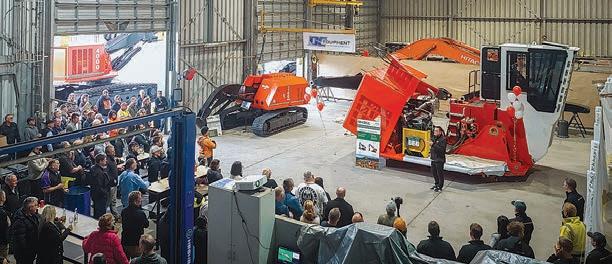
struck by a falling tree, the exact thing that DC Equipment’s machinery is attempting to avoid.
Dale says health and safety has always been the number one reason for their innovations, recalling all too well the fear he would feel when receiving an unexpected call from one of his crew managers.
“It’s the fear that someone has been hurt when that phone call comes in, but I don’t feel that anymore.”
Now, with a record zero incident rate over 1.5 million manhours
in their machines, the health and safety focus can now shift to incorporate the environmental impacts of the industry.
“We have built this equipment to save our people from injury and we’ve reduced the number of incidents, which include injuries and near-misses, by 85 per cent over 10 years. Now we are bringing in environmental and believe we can cut 50 per cent of emissions.”
He says the remote felling carriage doesn’t even have a footprint on the ground – it is suspended in
the air so it’s only the impact of the tree hitting the ground that impacts soil.
When mainly excavators were used to cut trees down, each weighing around 40 tonne, they were required to move up and down the hillside day-in and dayout, compressing and disturbing the ground underneath them as they moved.
Dale says the new RFM machine weighs just 10 tonnes and doesn’t require an operator to be present on the hillside, so is a game-changing piece of equipment. He is proud that, aside from the odd imported component everything is manufactured locally, creating around 150 jobs, but also celebrates the opening of a new manufacturing premises in Prince George, British Columbia last week.
The new location, which the Madill brand has had a previous presence in, will help support the increasing demand from the North American market.










Community planting day Grovetown Lagoon, Sunday 14th July.
Please join us for planting 9:30 am – 12:00 pm, then stay for a BBQ-loving cooked by the Lions Club Blenheim
Meet at the sign, ‘steam wharf road’
Bring: warm clothes, gumboots or solid boots, a spade if you have one, a water bottle
Postponement: Sunday 10th August – registered volunteers will receive an email notification, otherwise please check Grovetown Lagoon Facebook page before 8:30 am.
Registration: For catering and event notifications please at: www. landcare.org.nz/nzltmis2/form_ events_registration

Location: Nelson
Date: Wednesday 17 July 2024
Time: 5:00pm - 8:00pm
Venue: Fairfield House
Cost: Free
Register: www. deernz.org/home/ events/2024-farmers-meet
REGISTER
Farmers are invited to an evening of networking and socialising. This will be an opportunity to meet with DINZ representatives and local farmers. Drinks will be served between 5.00pm - 5.30pm followed by Chef Brownie cooking up a delicious meal with the evening ending at 8pm. Registration essential.




